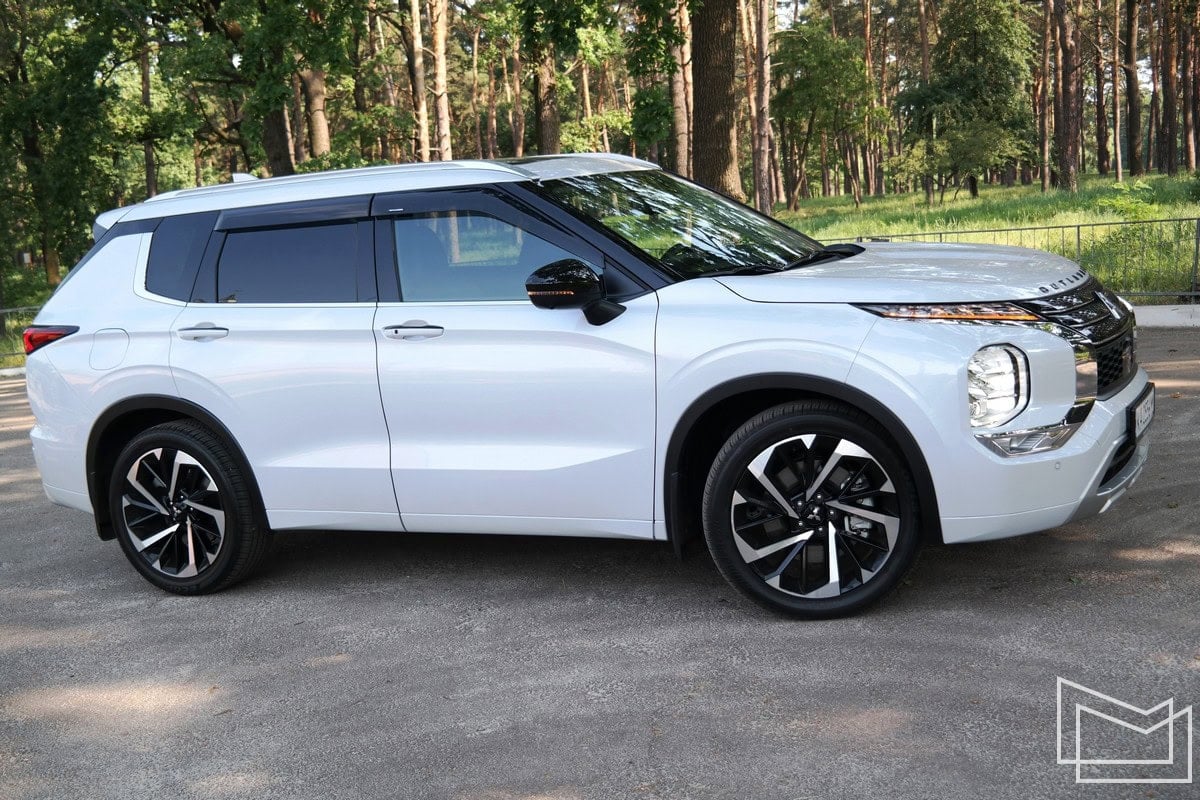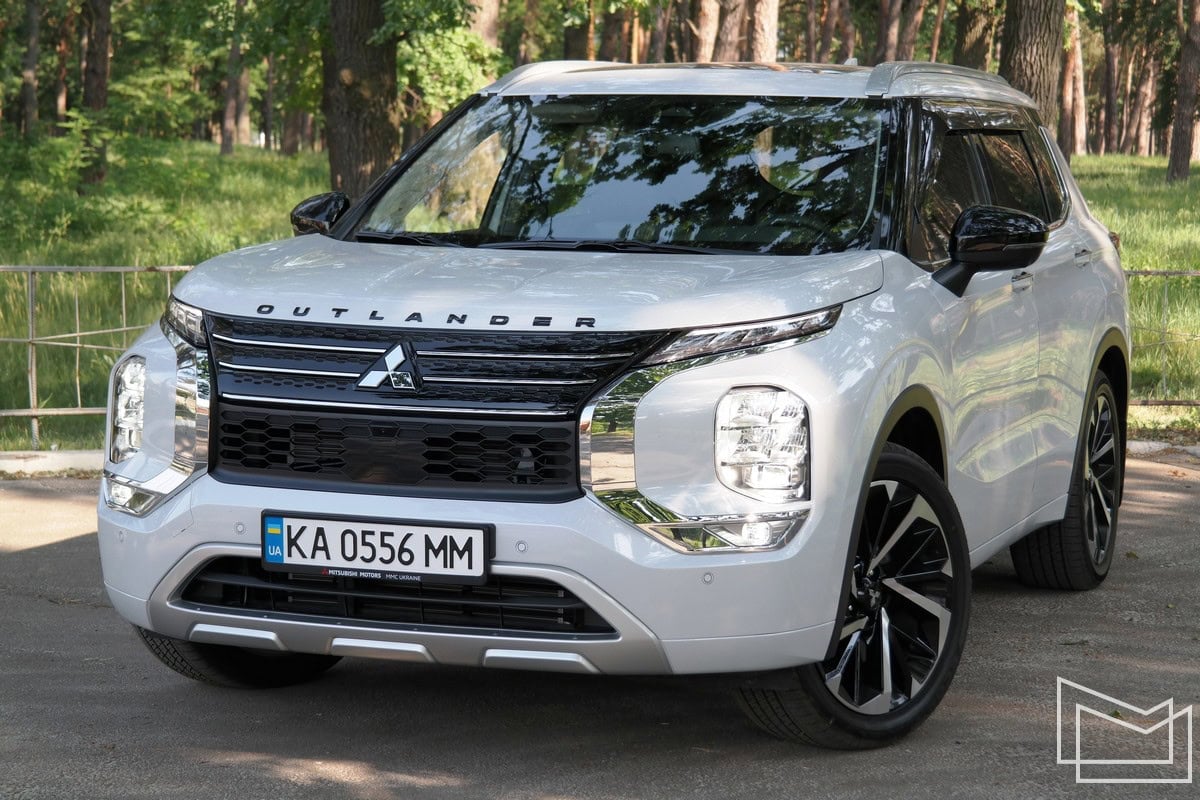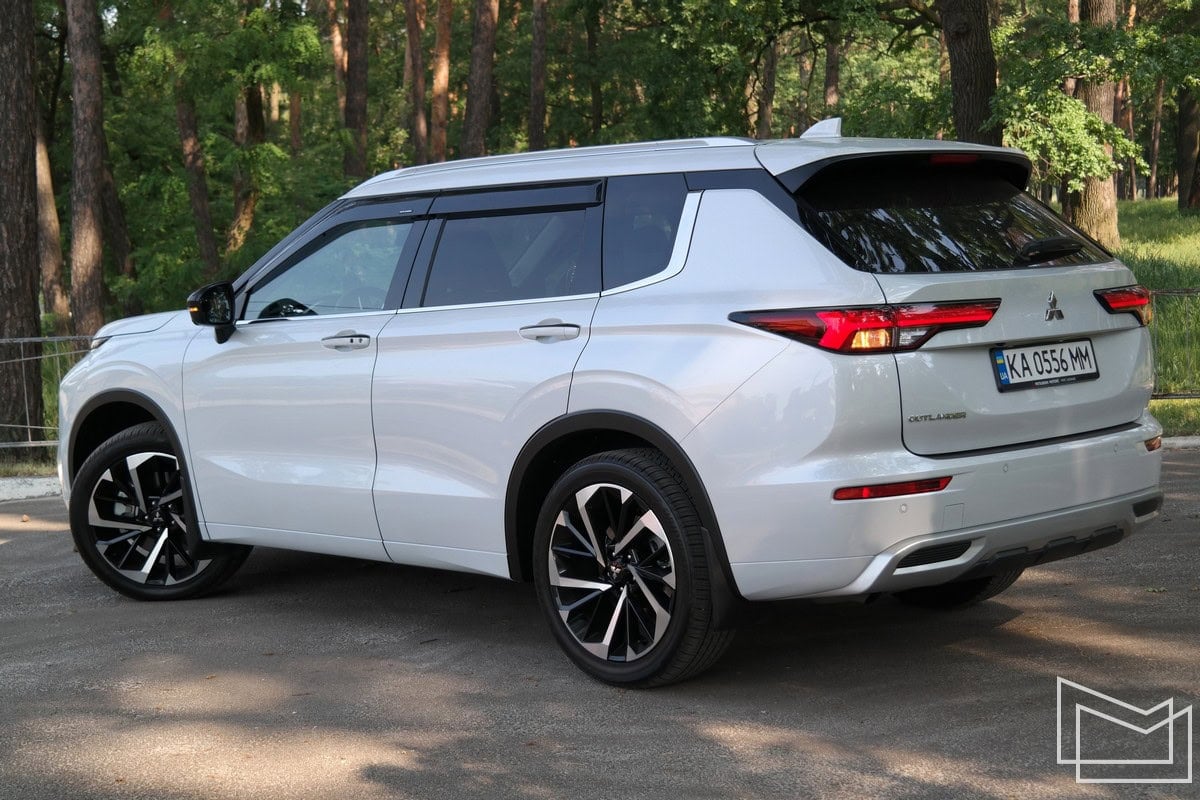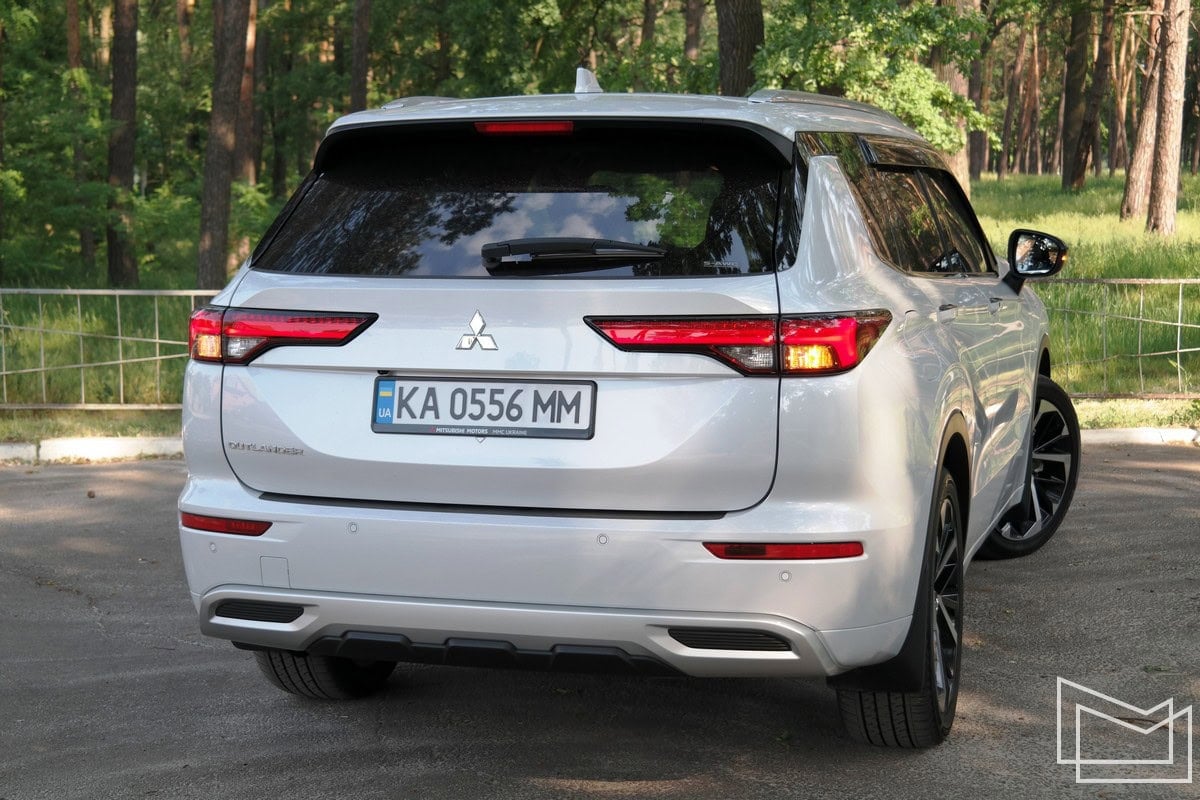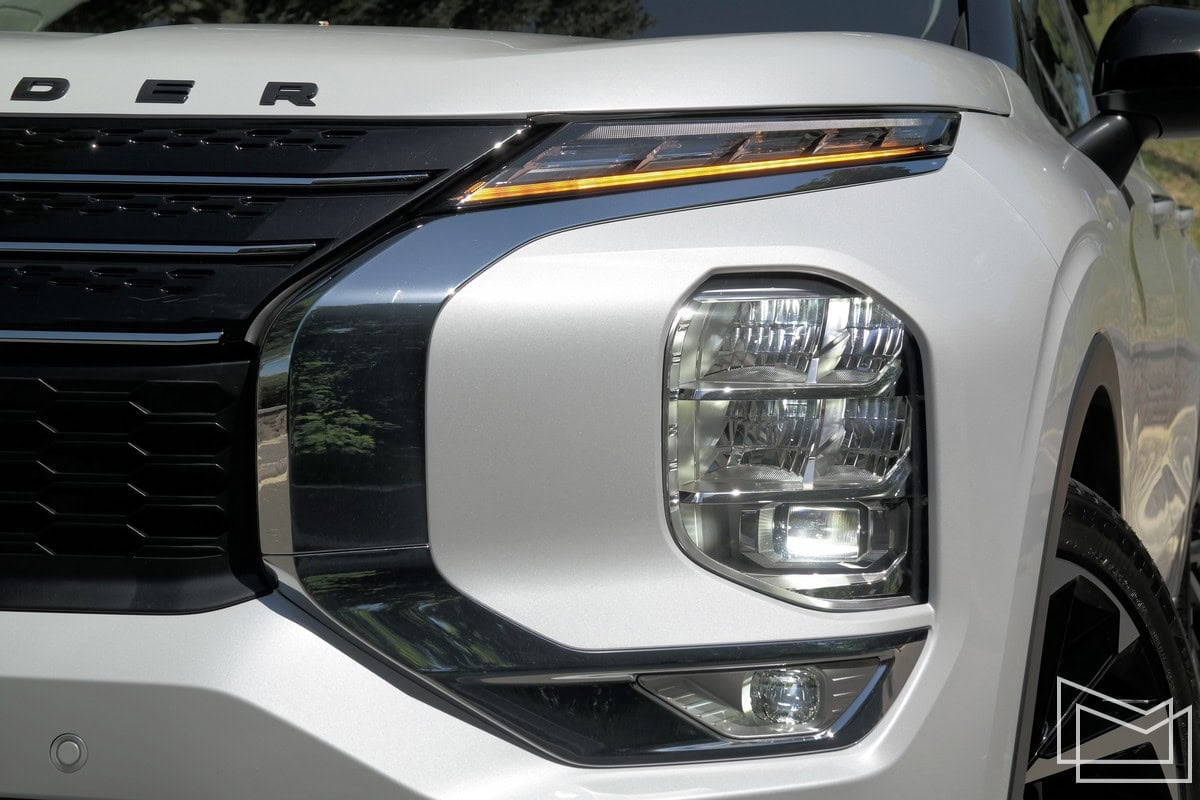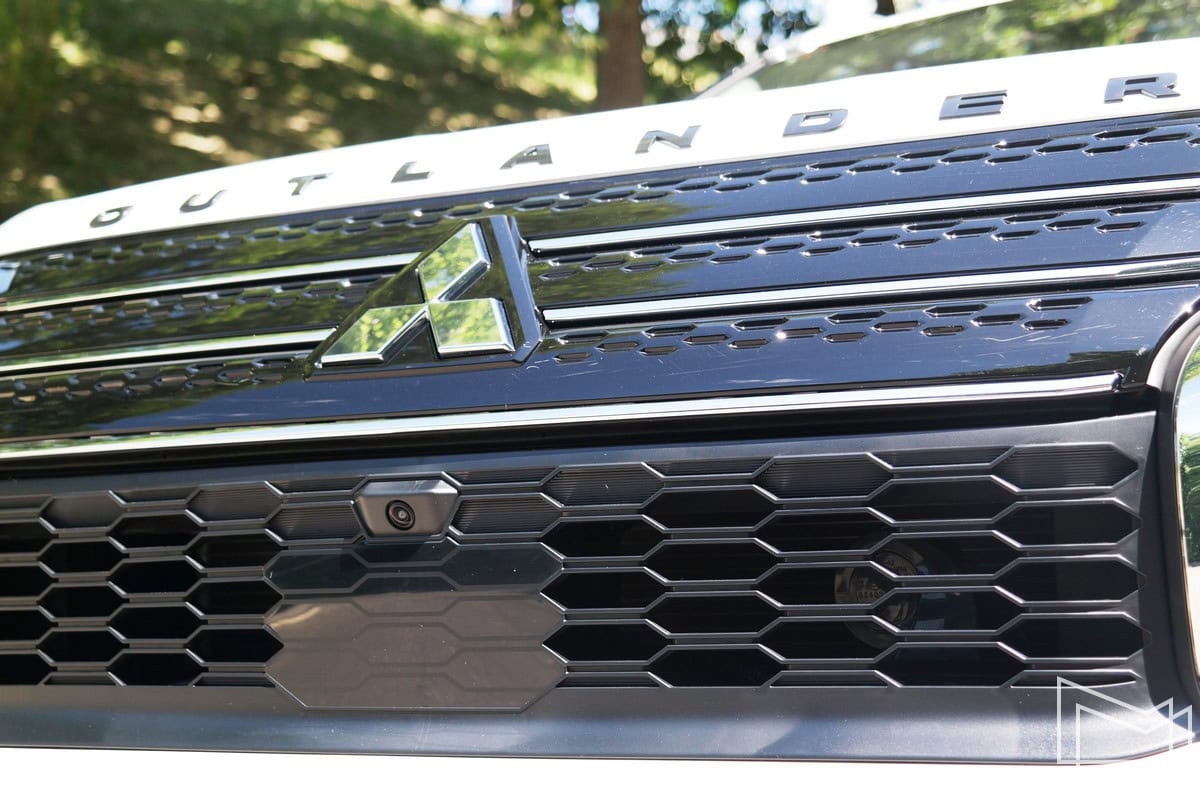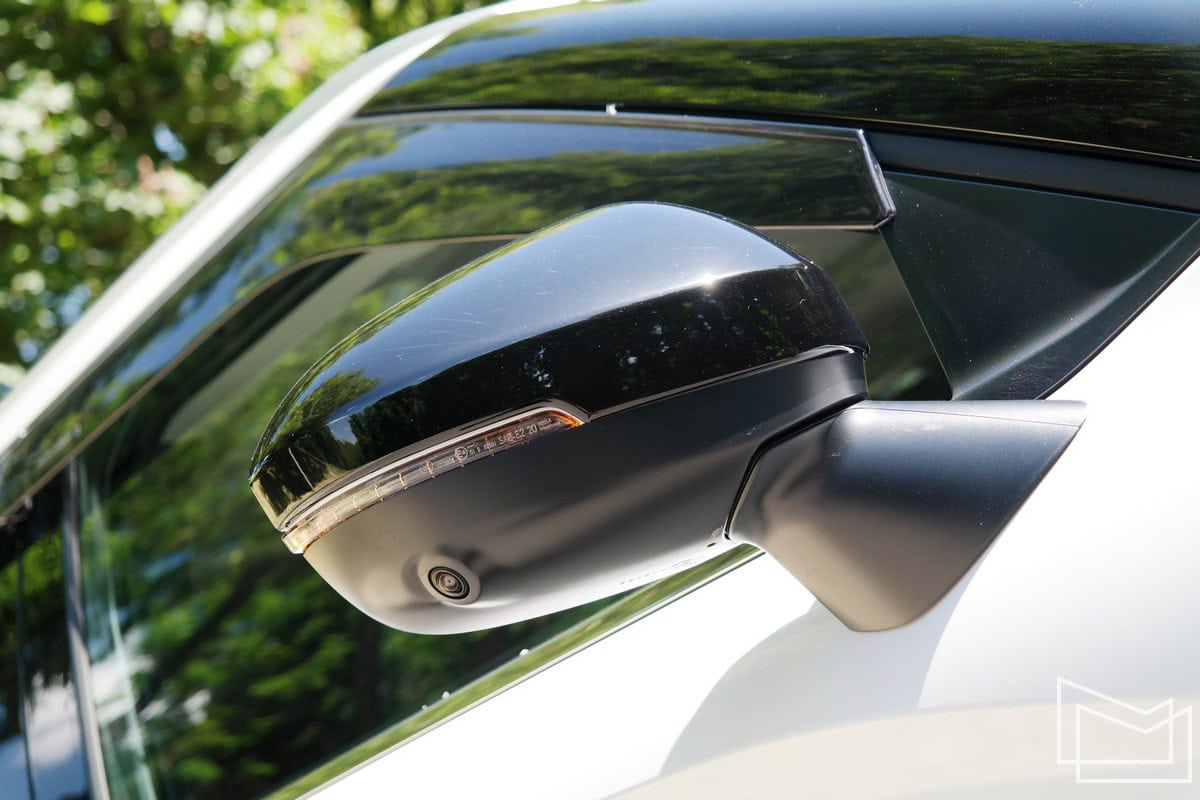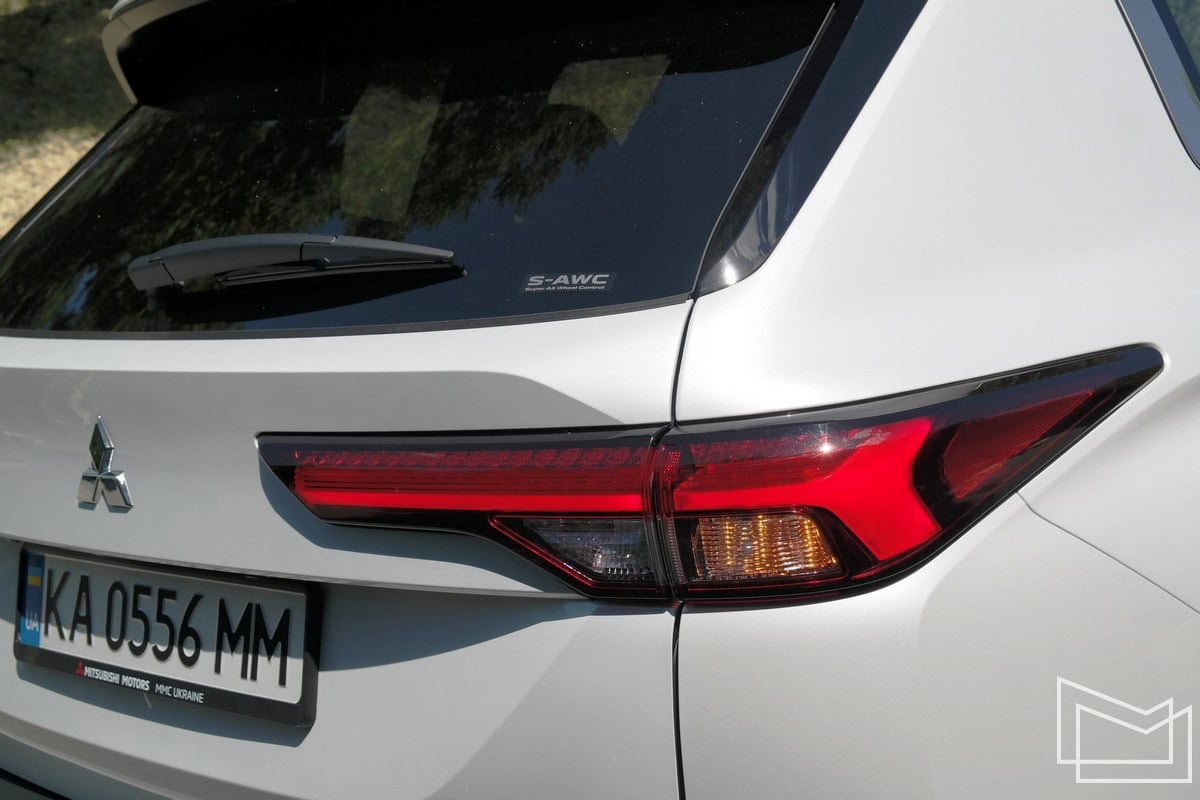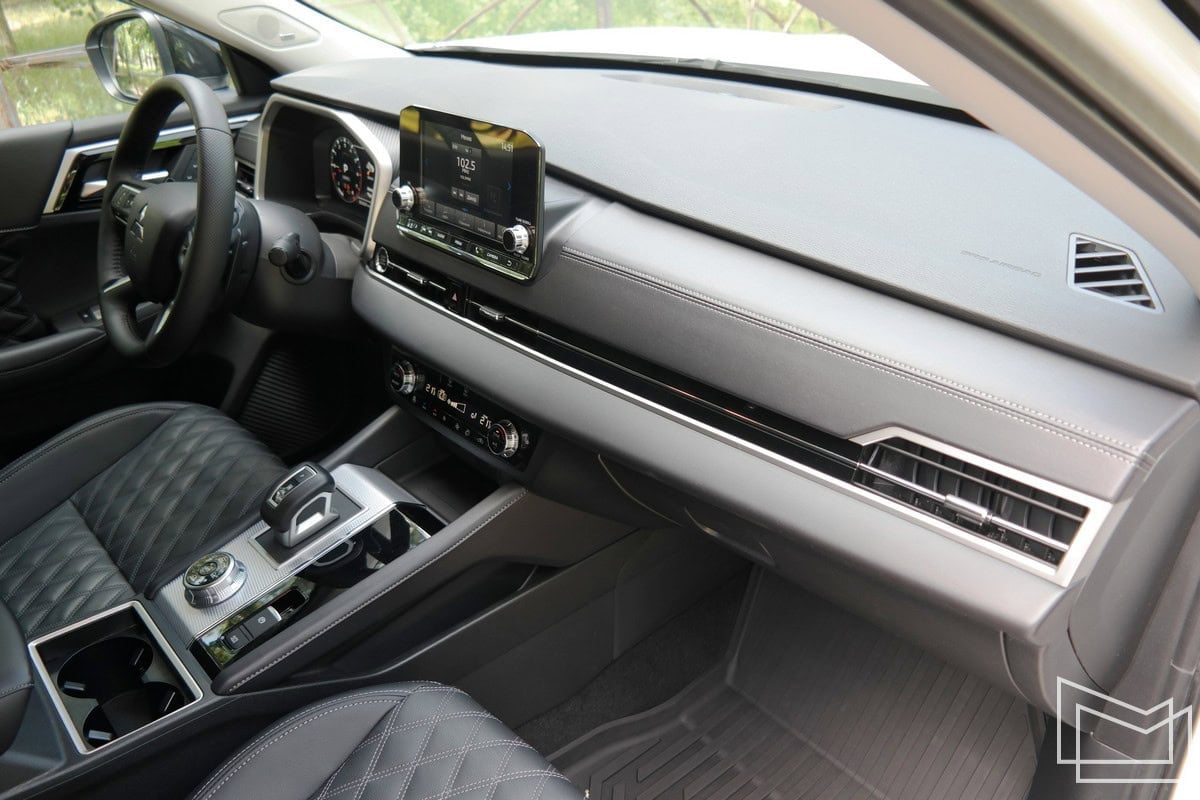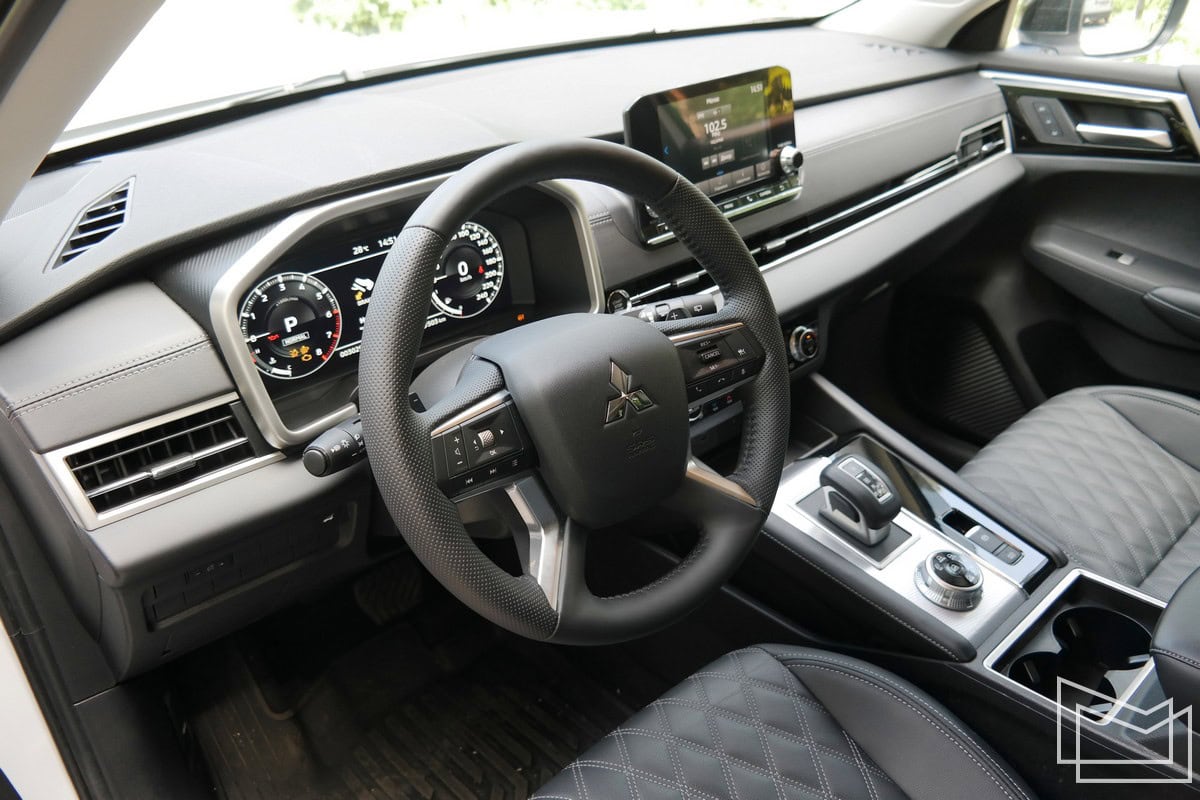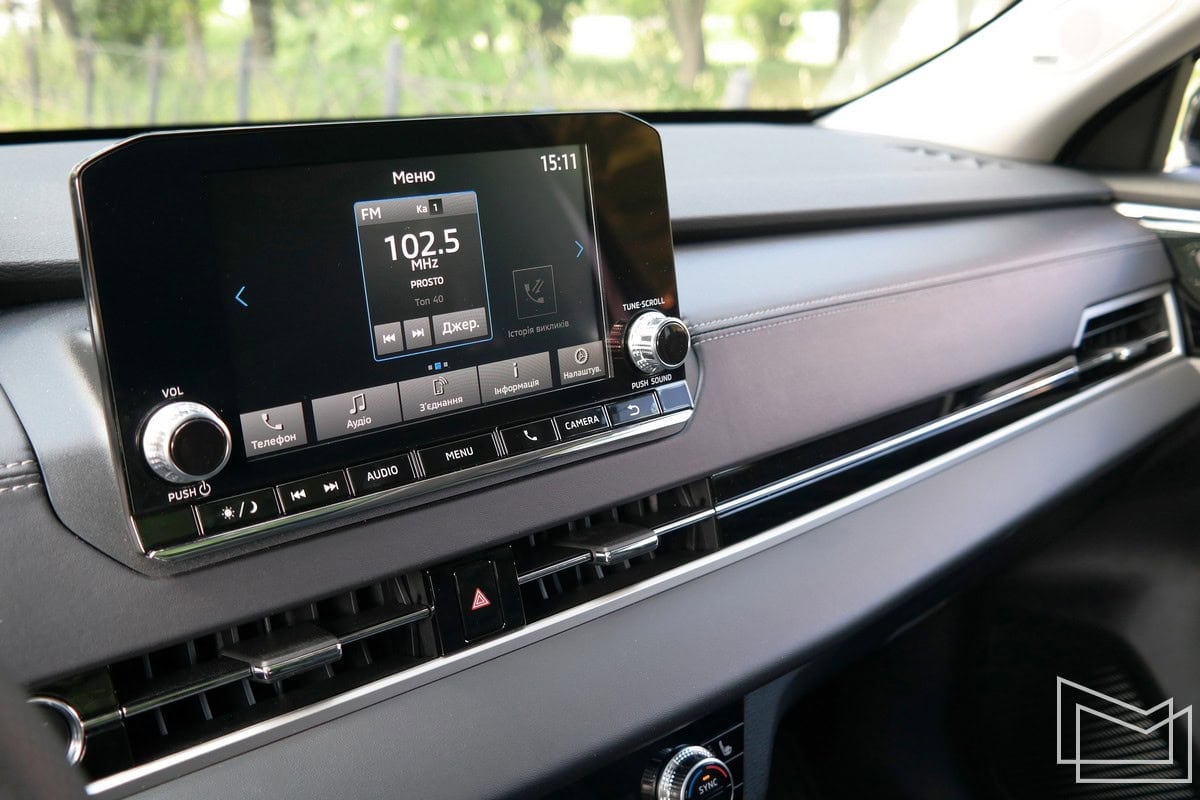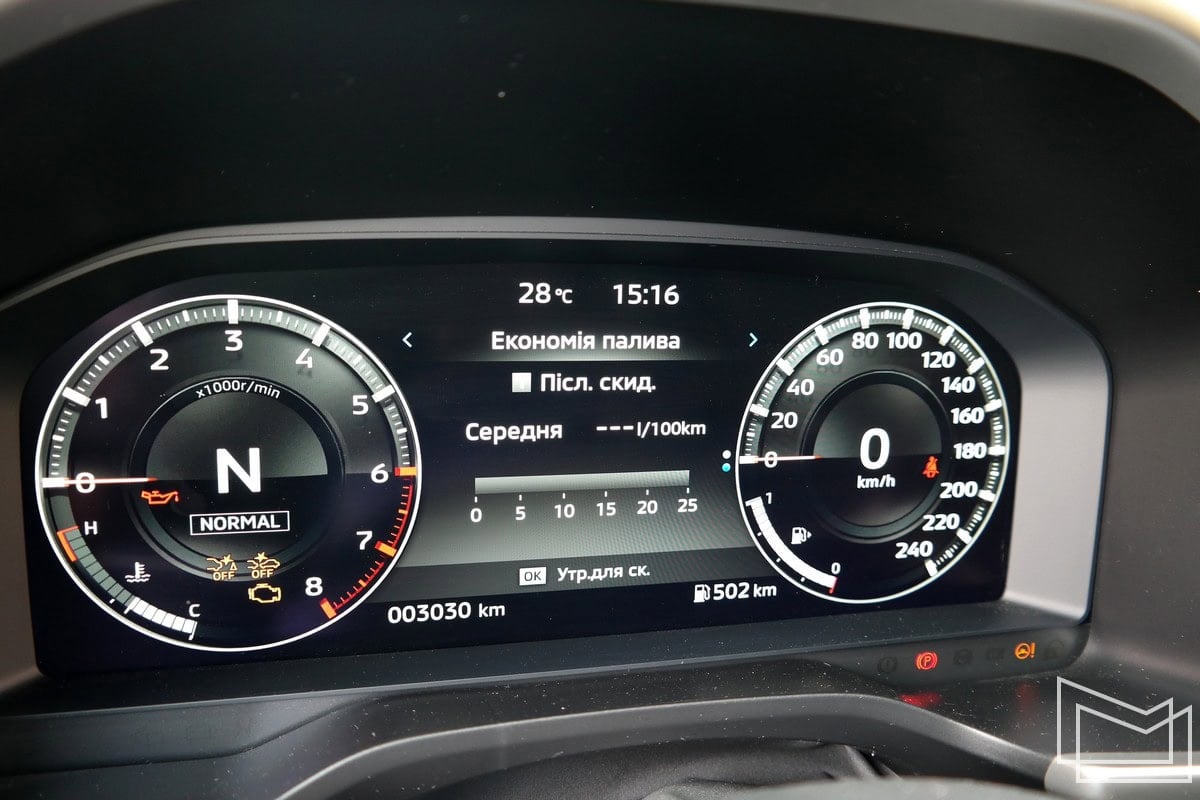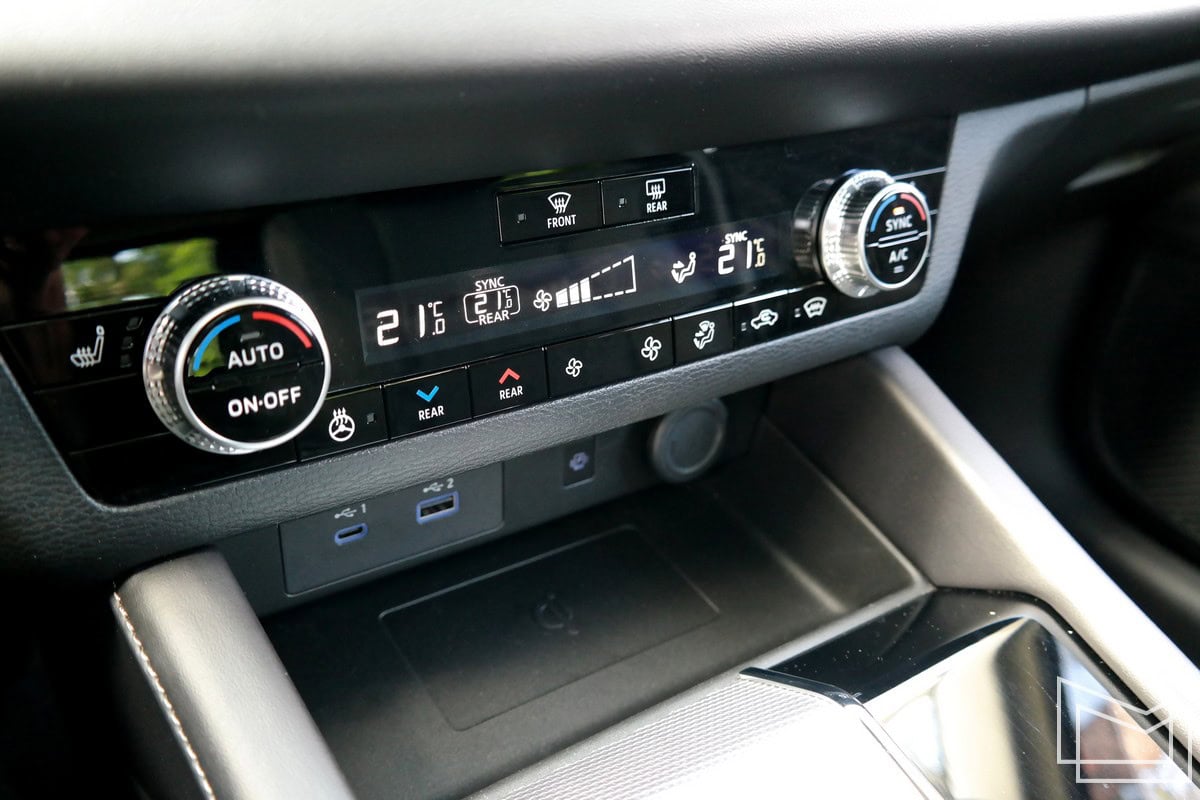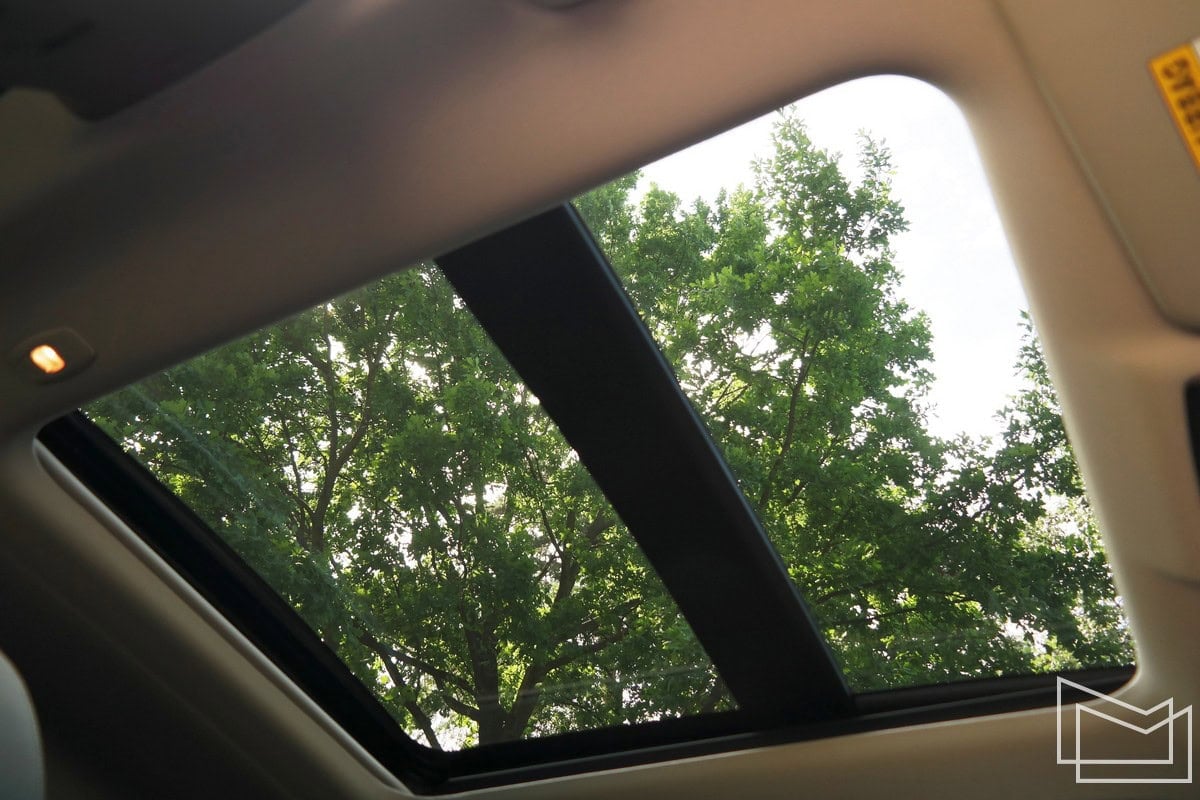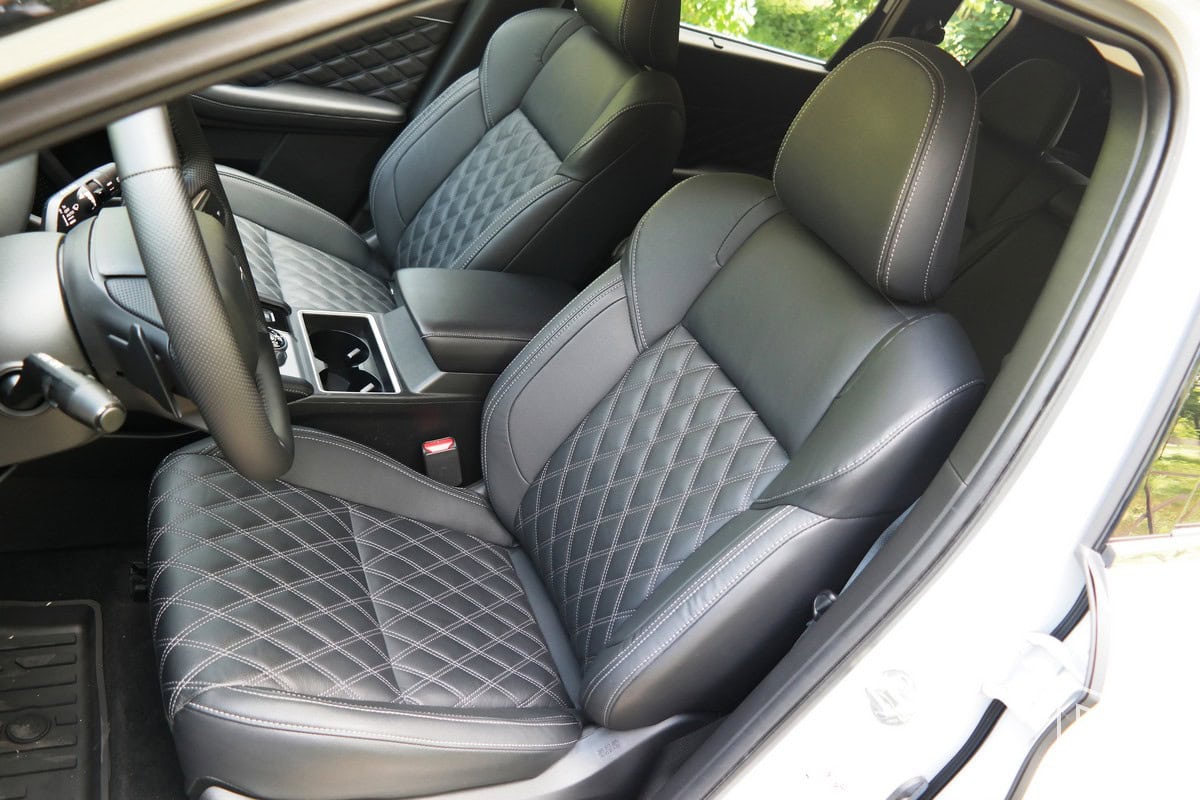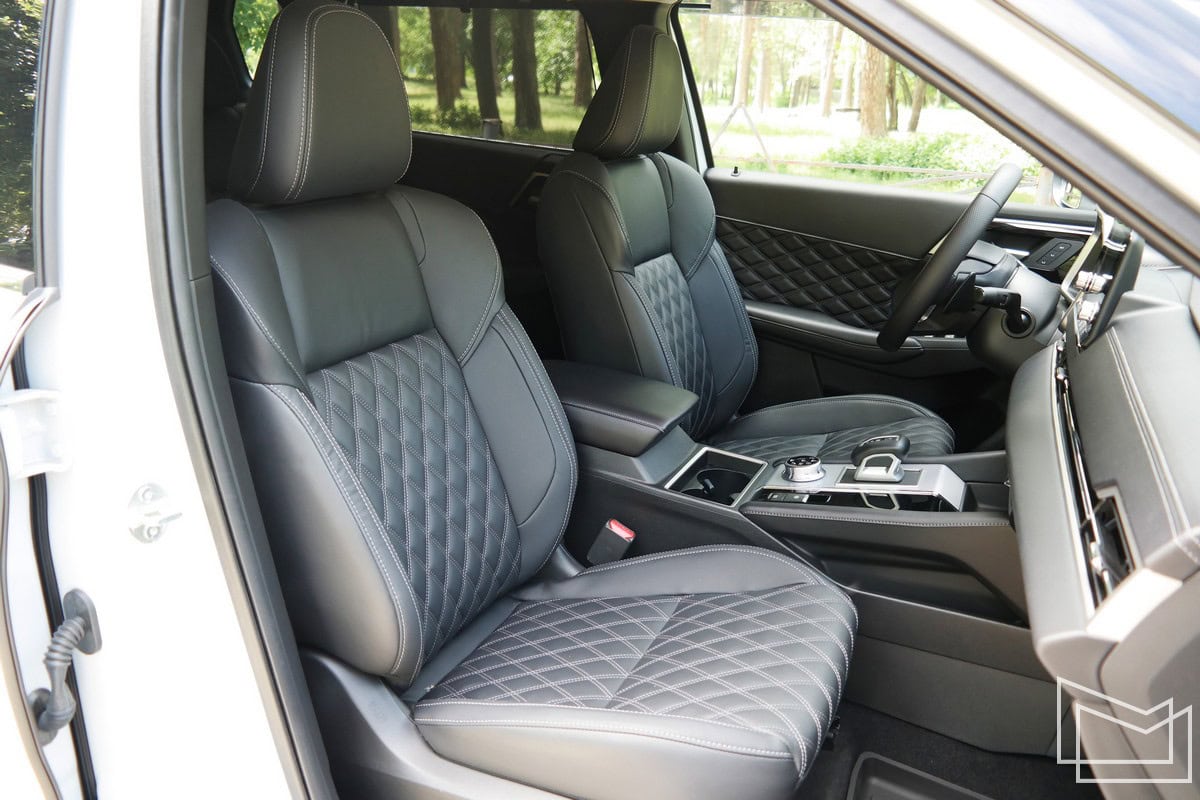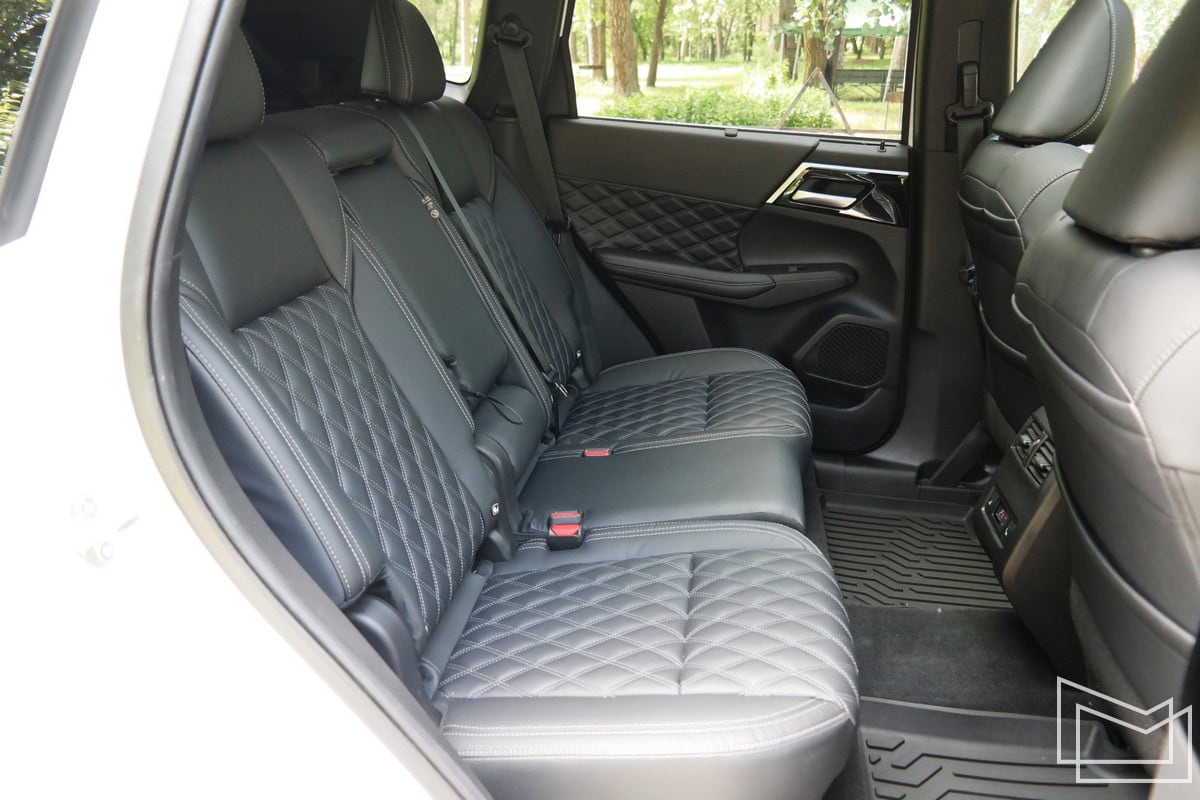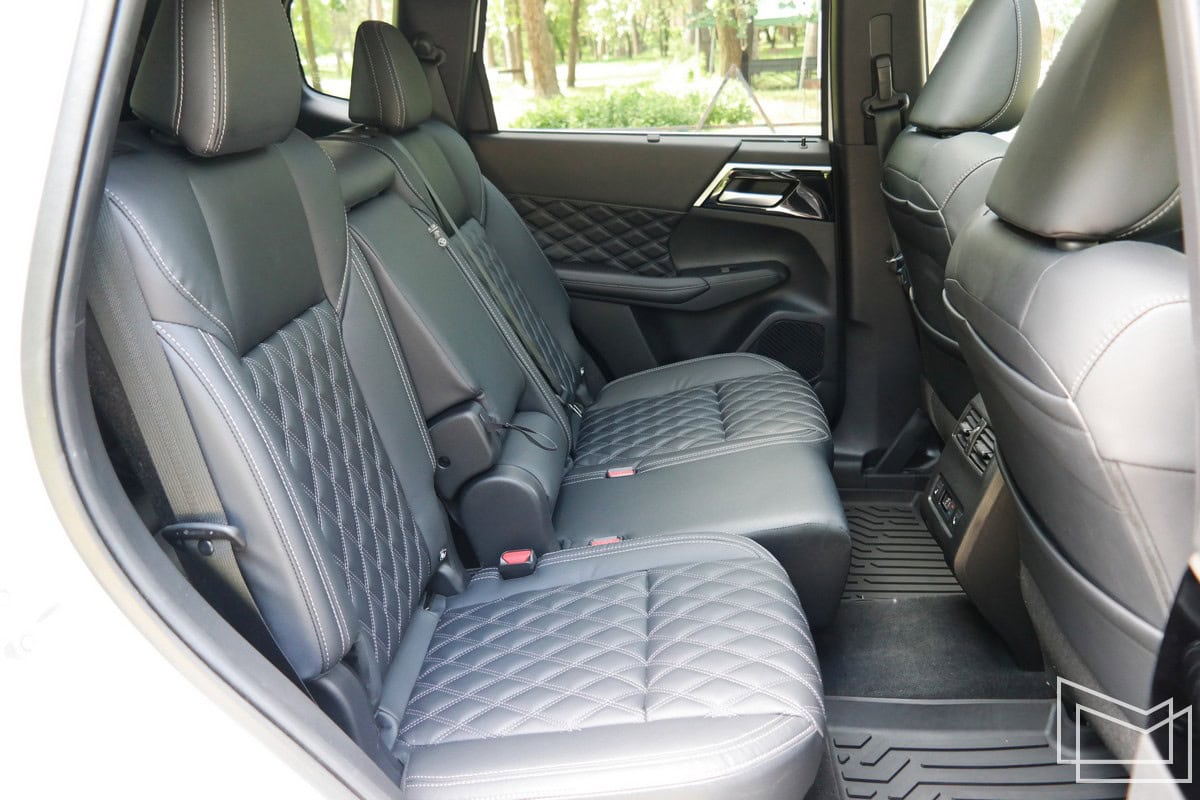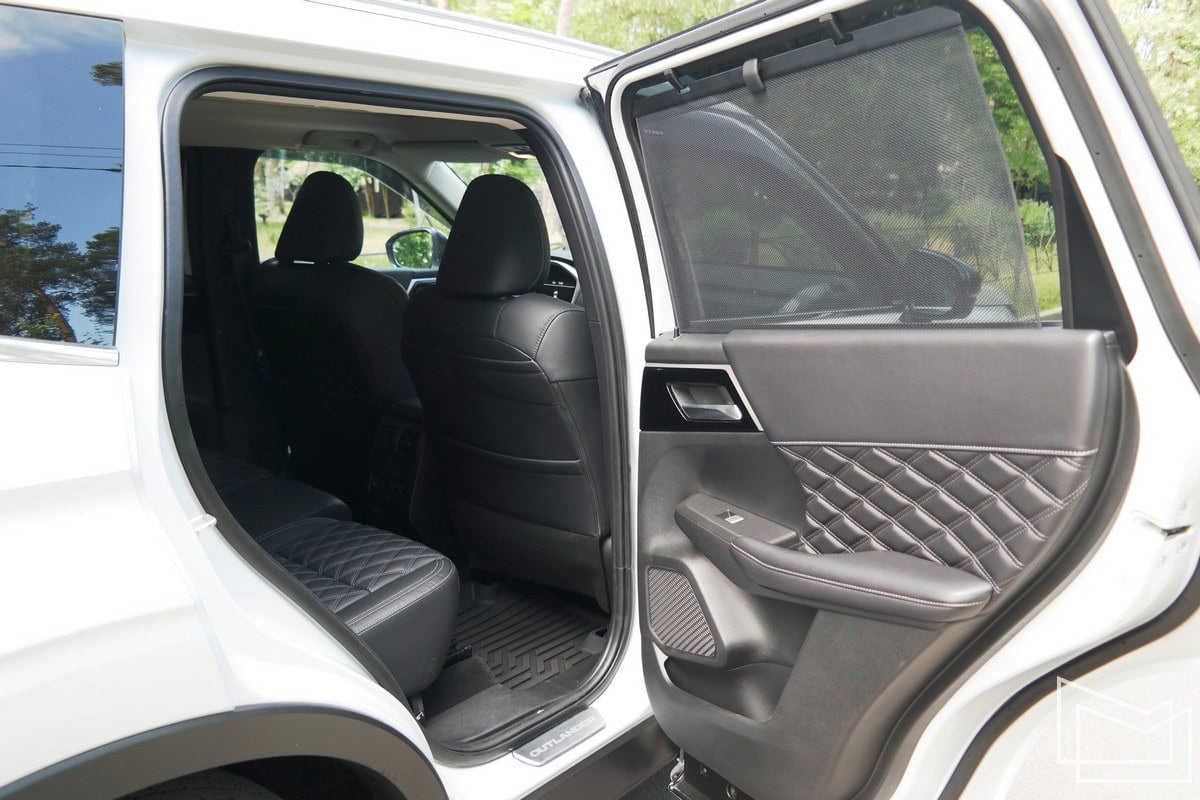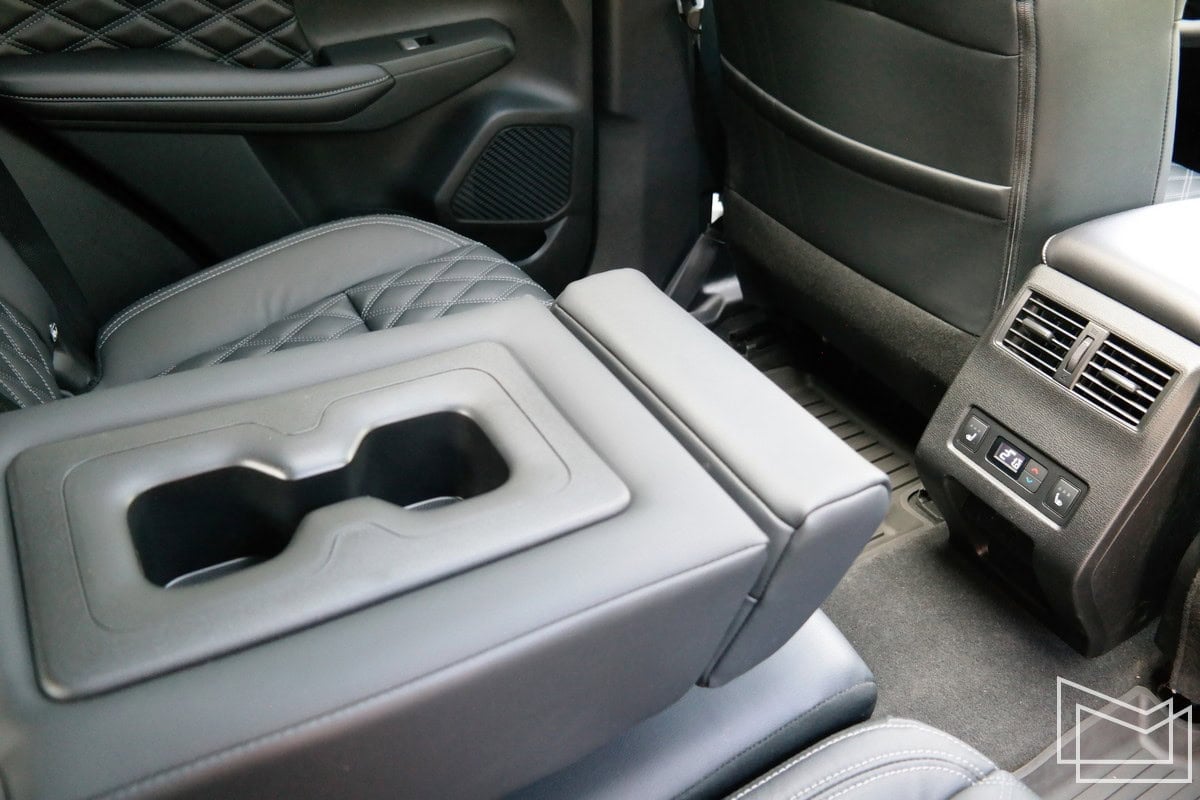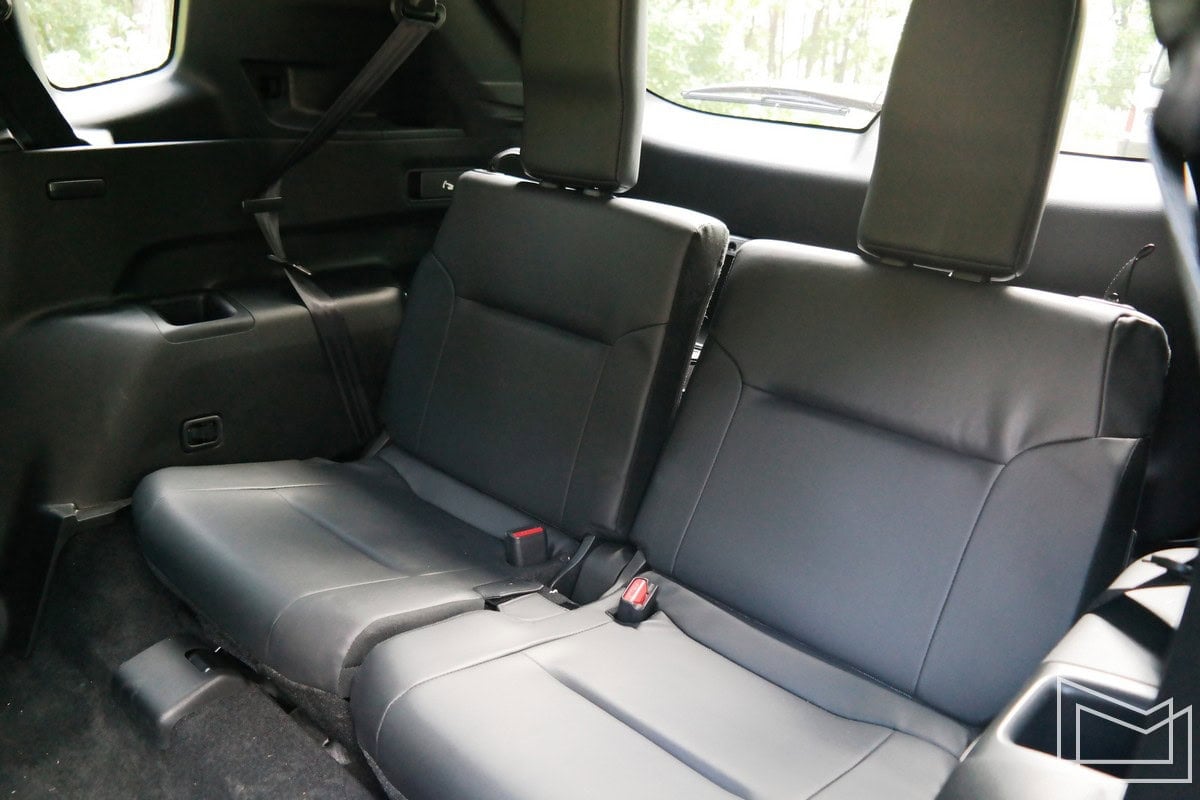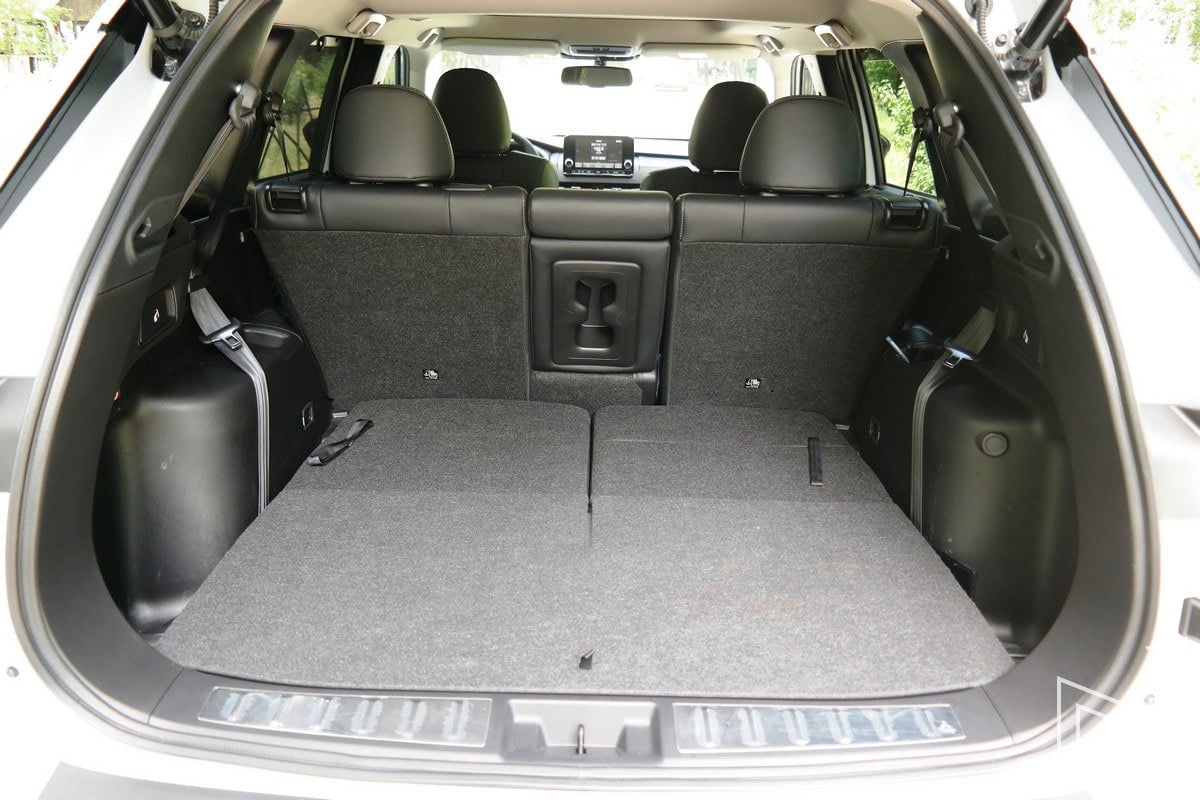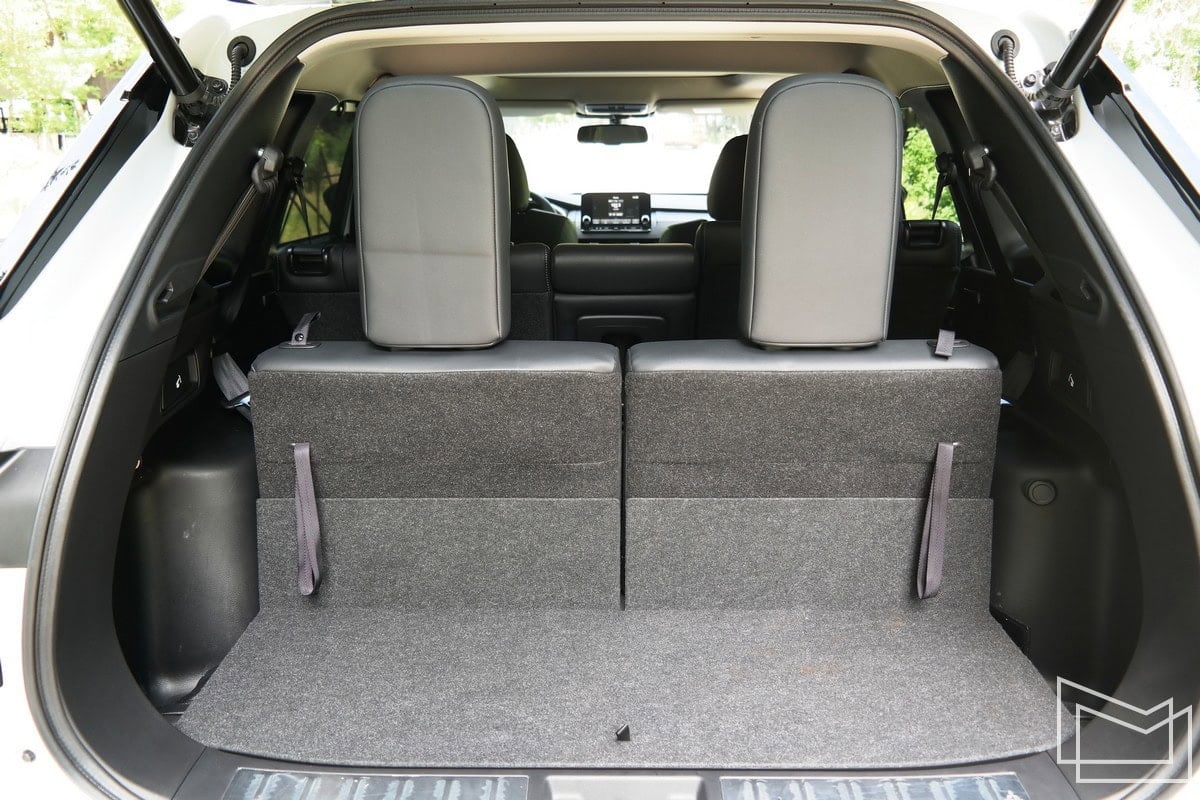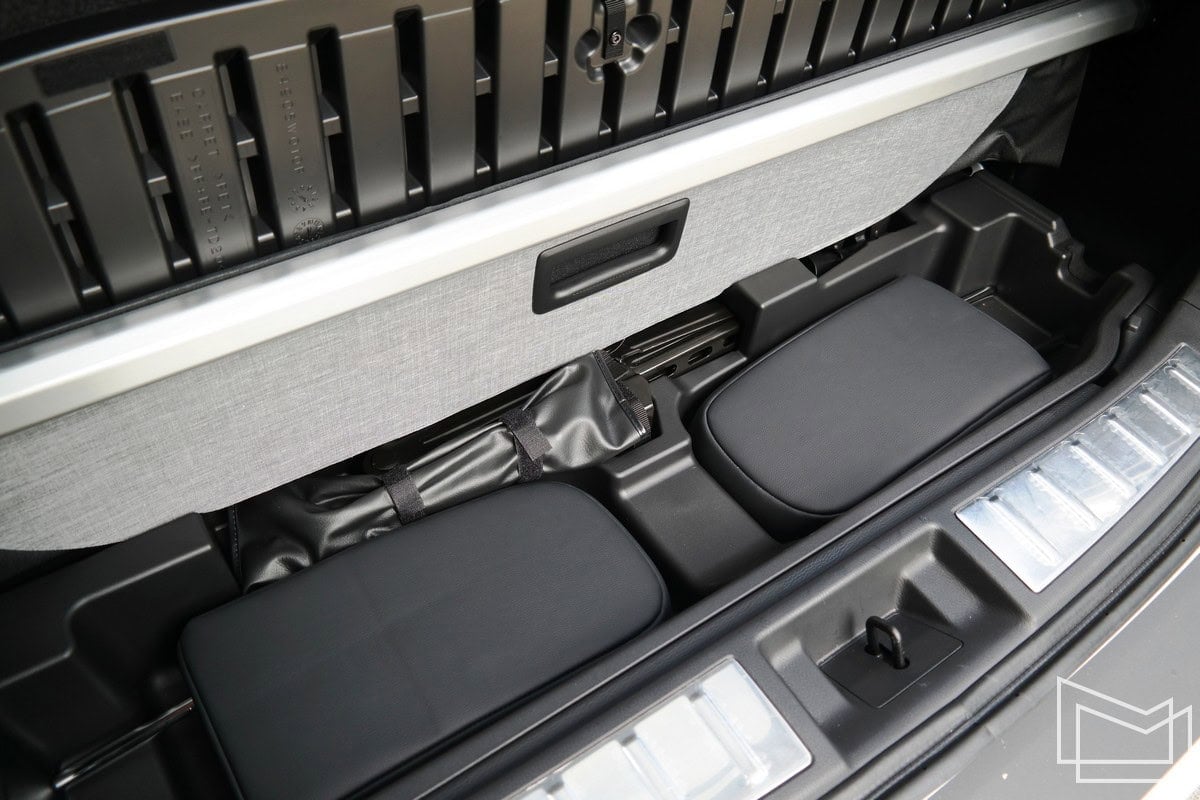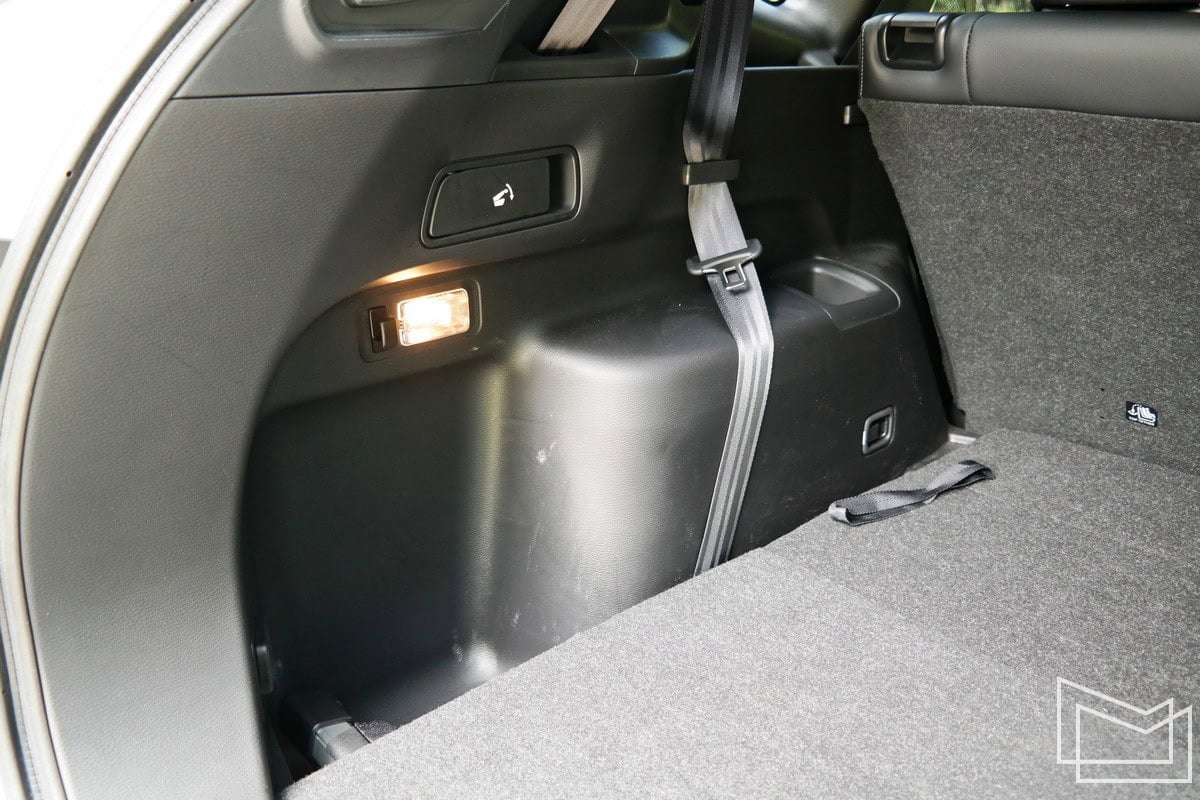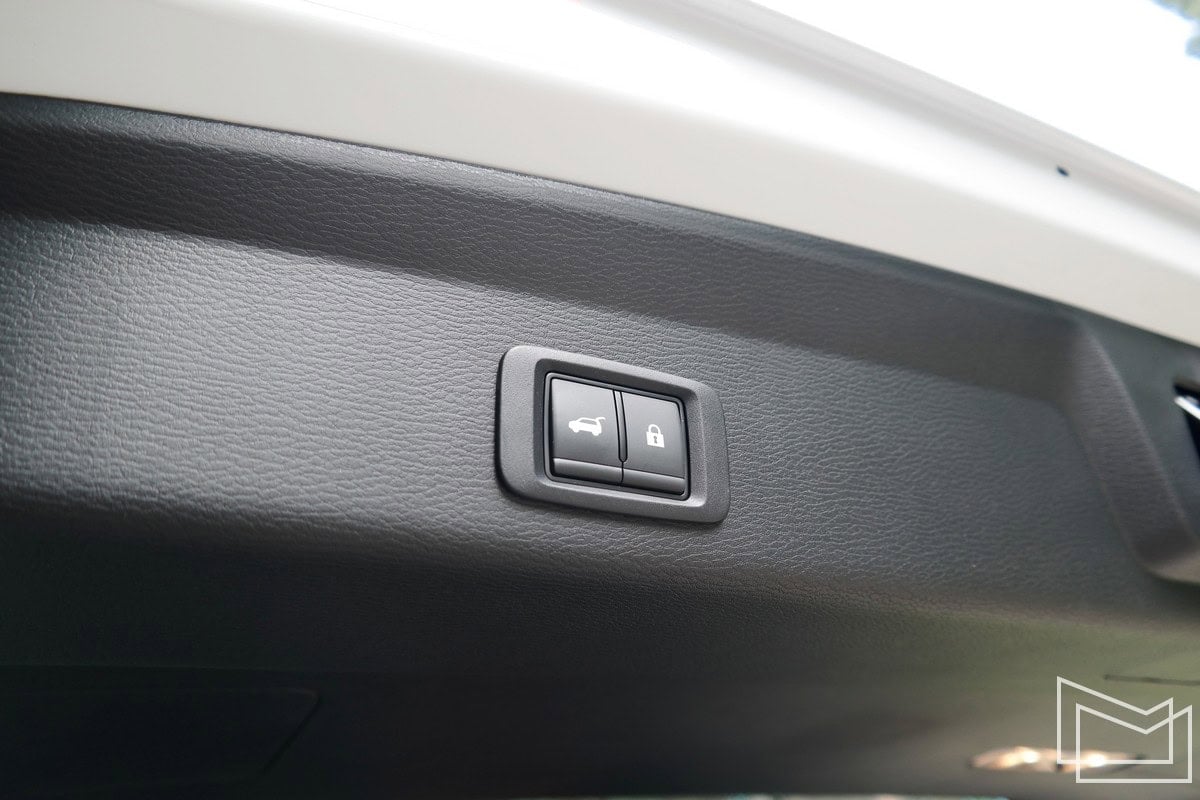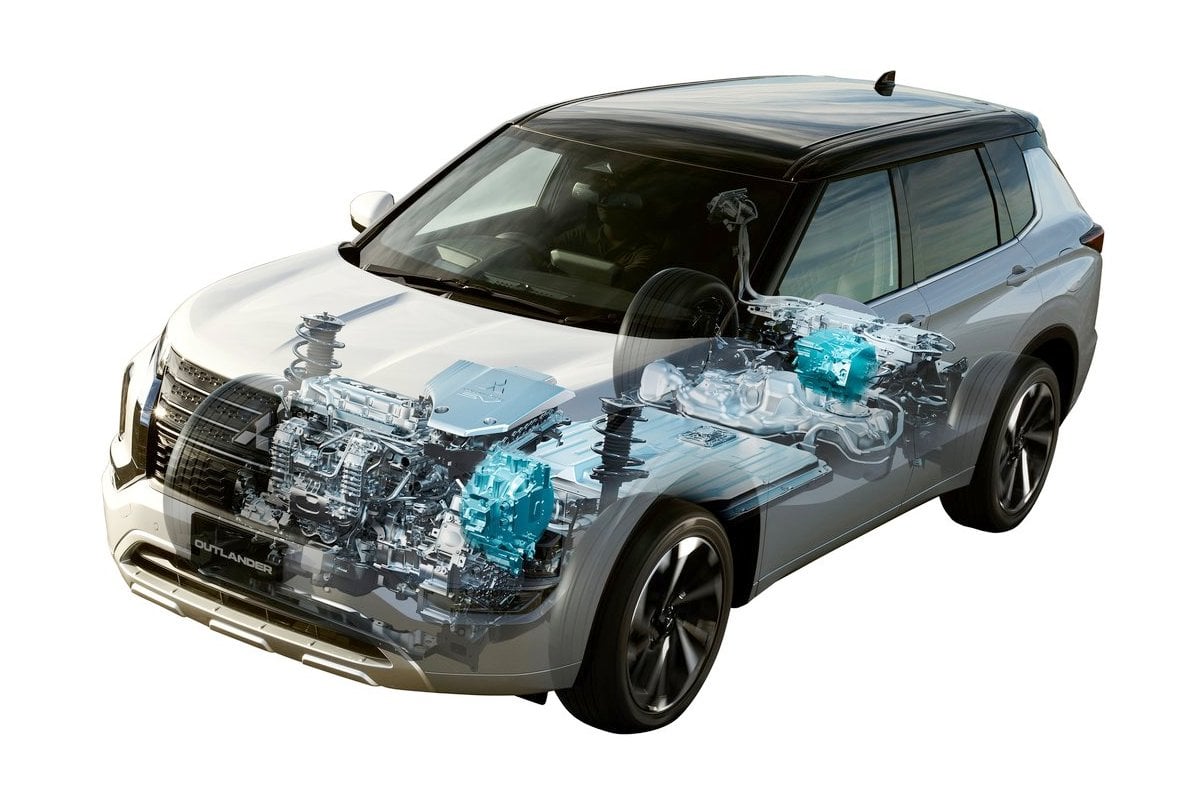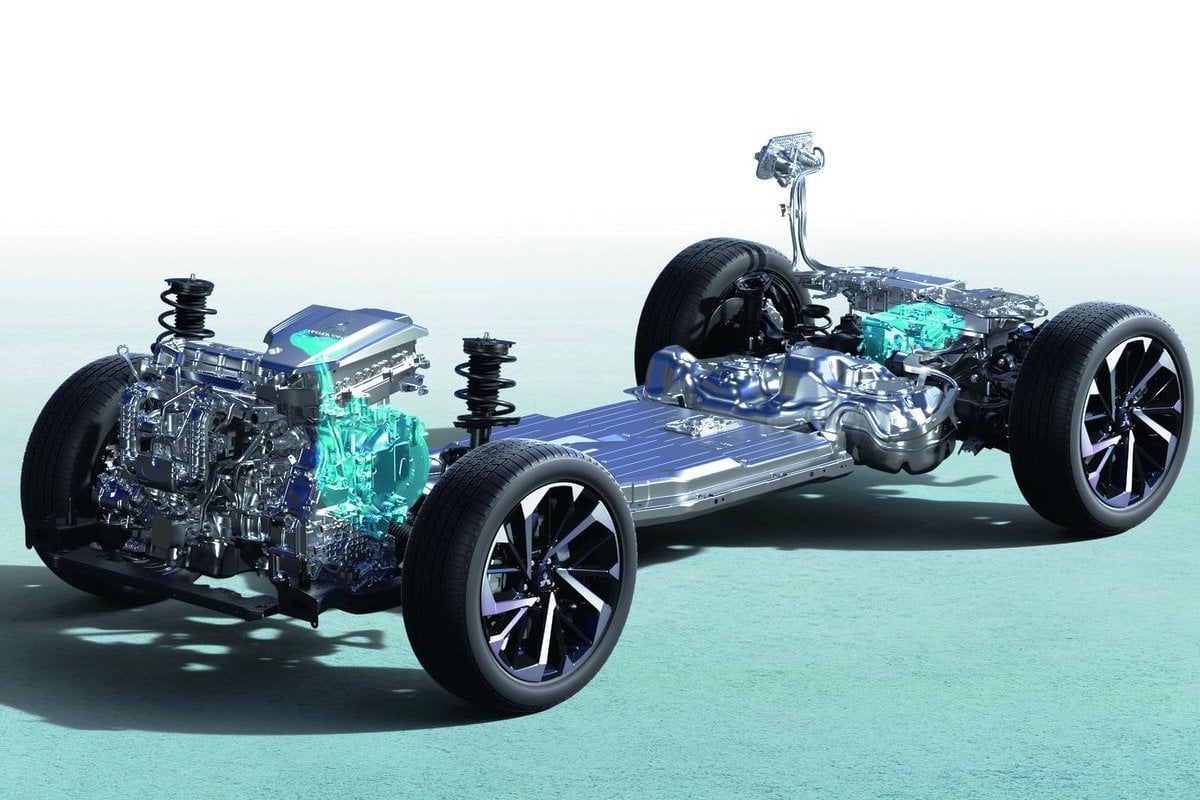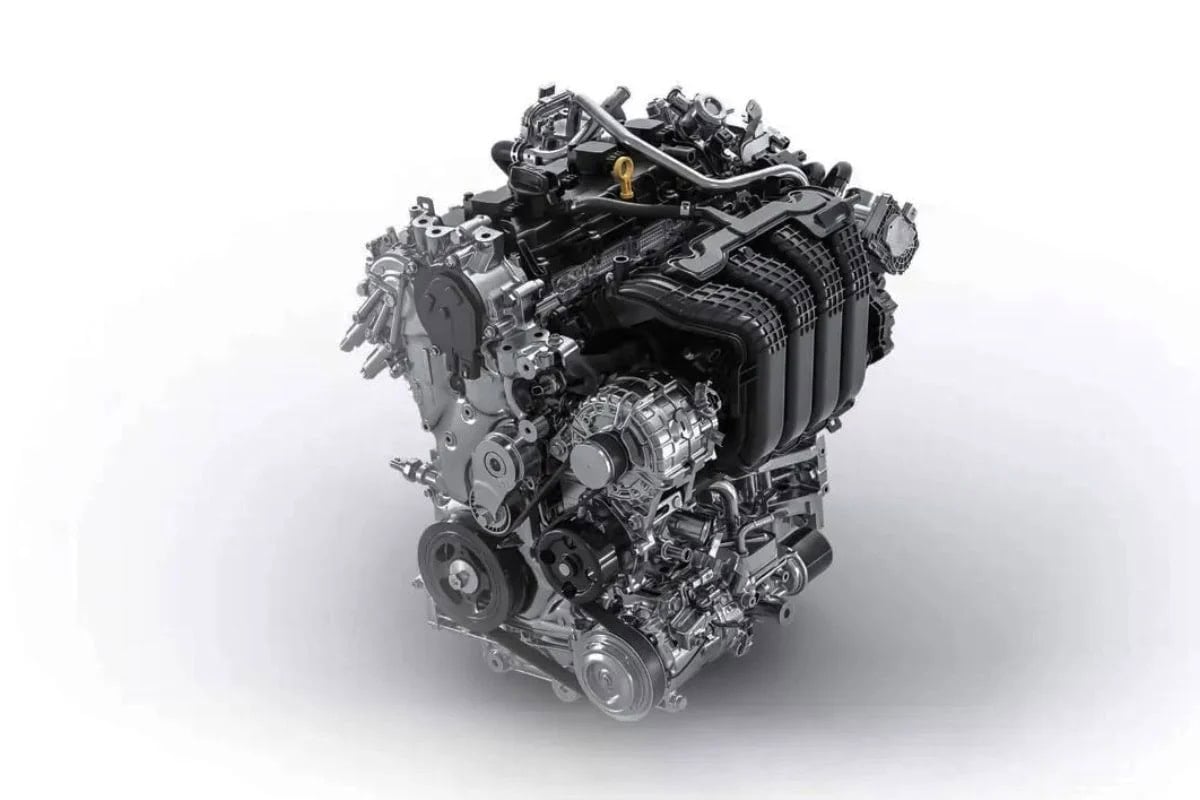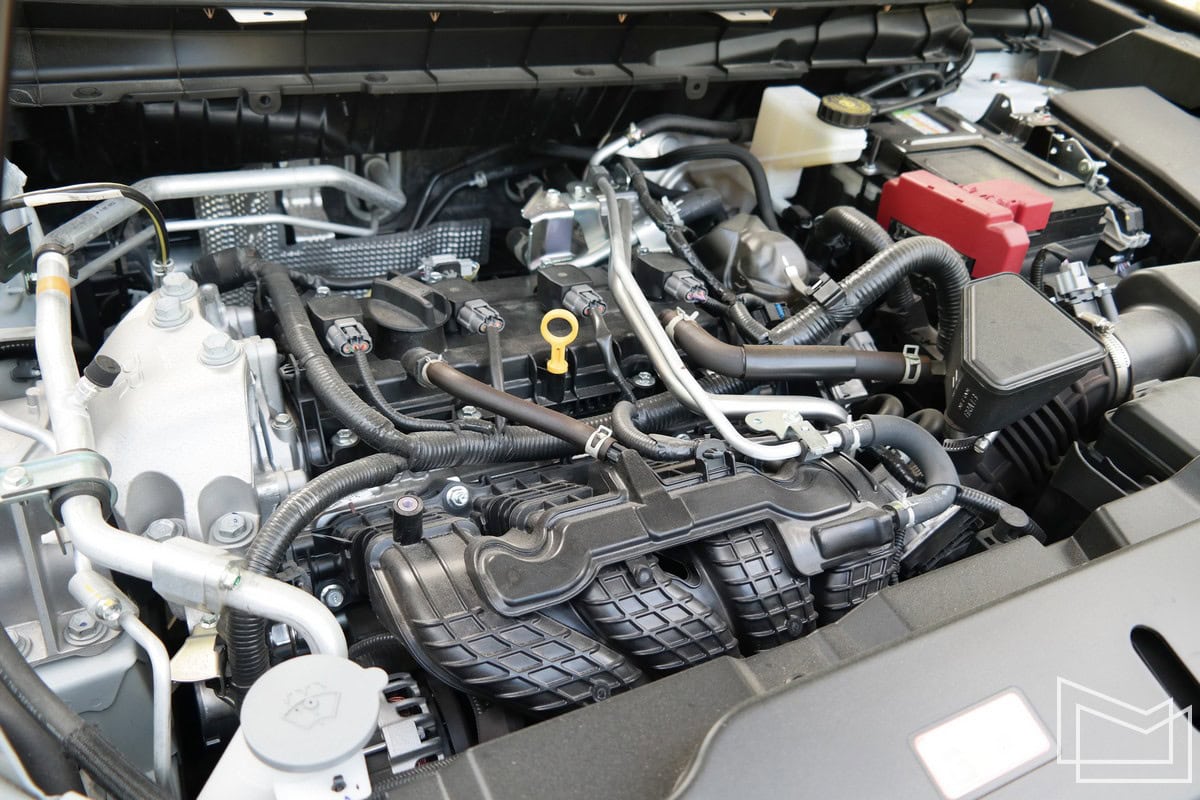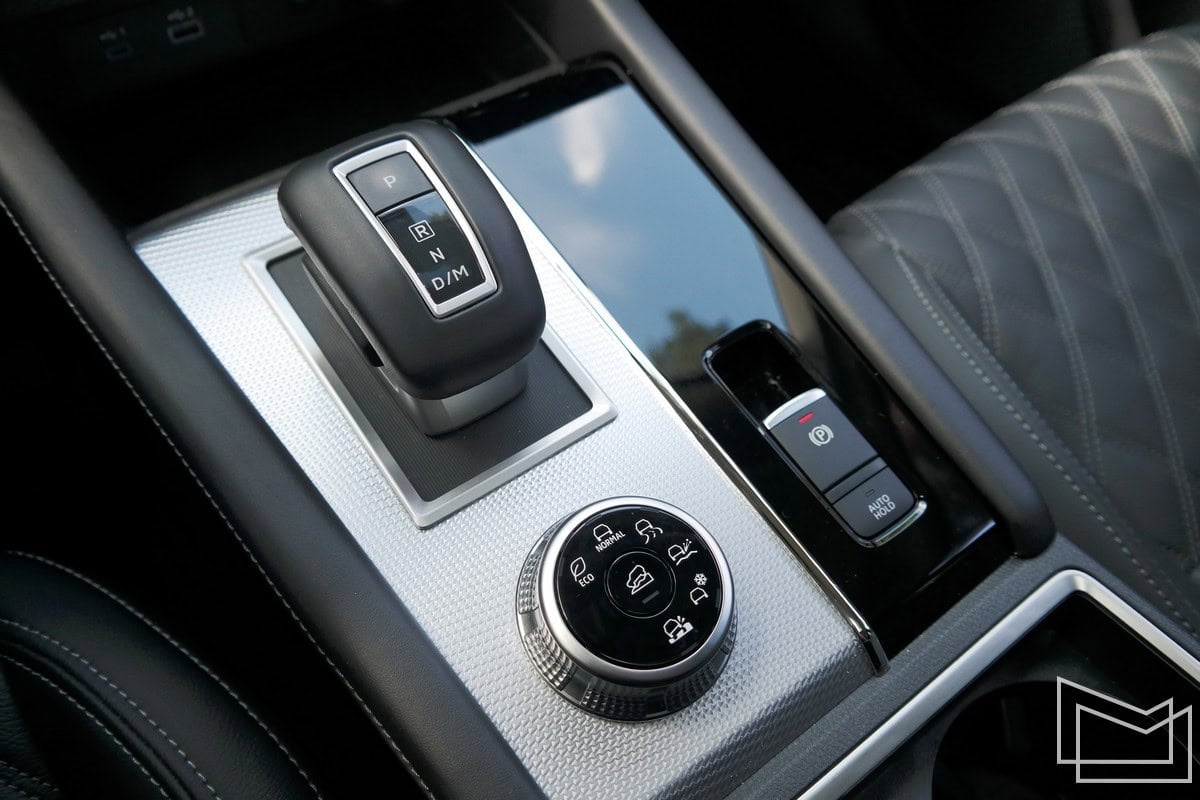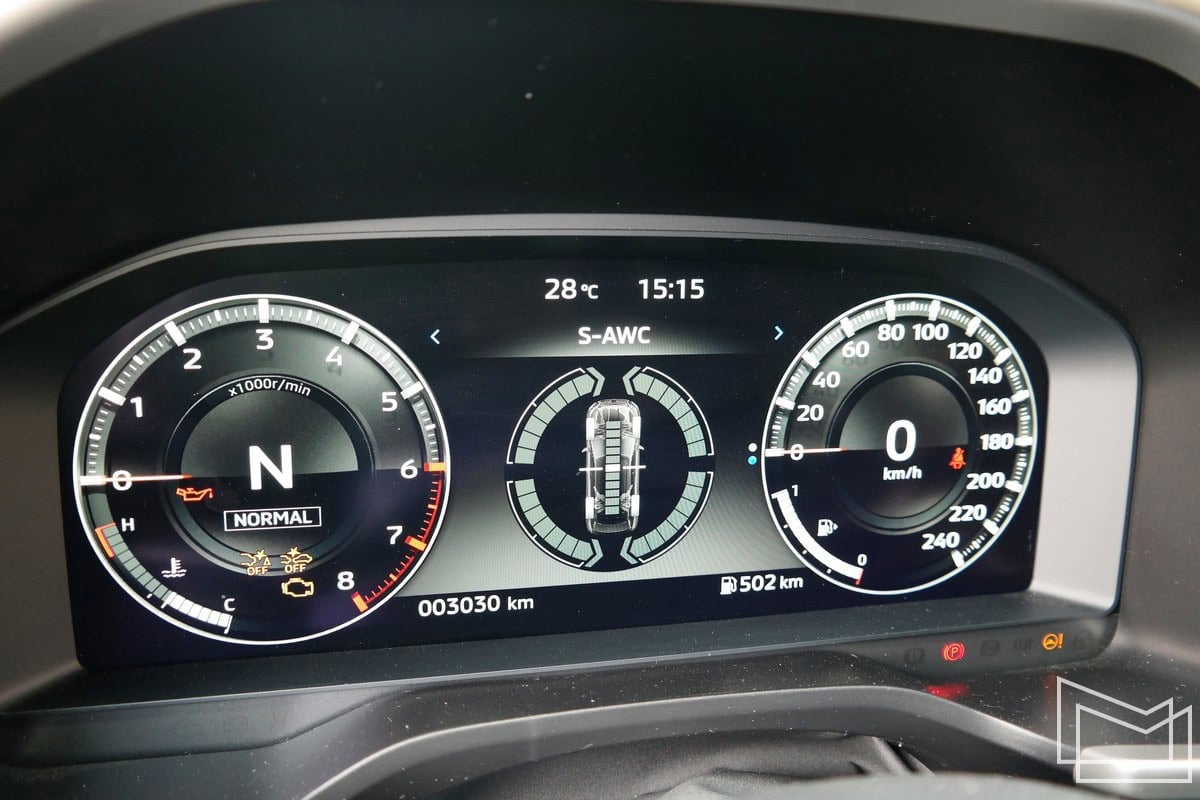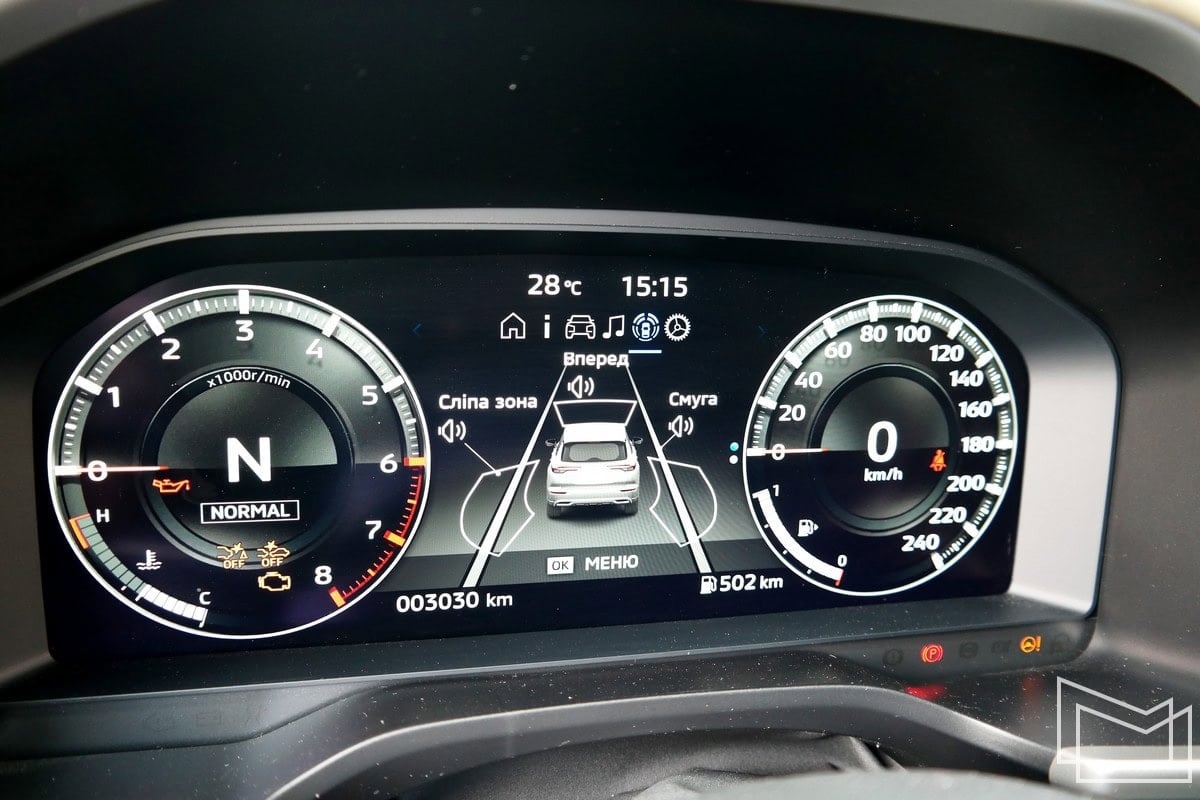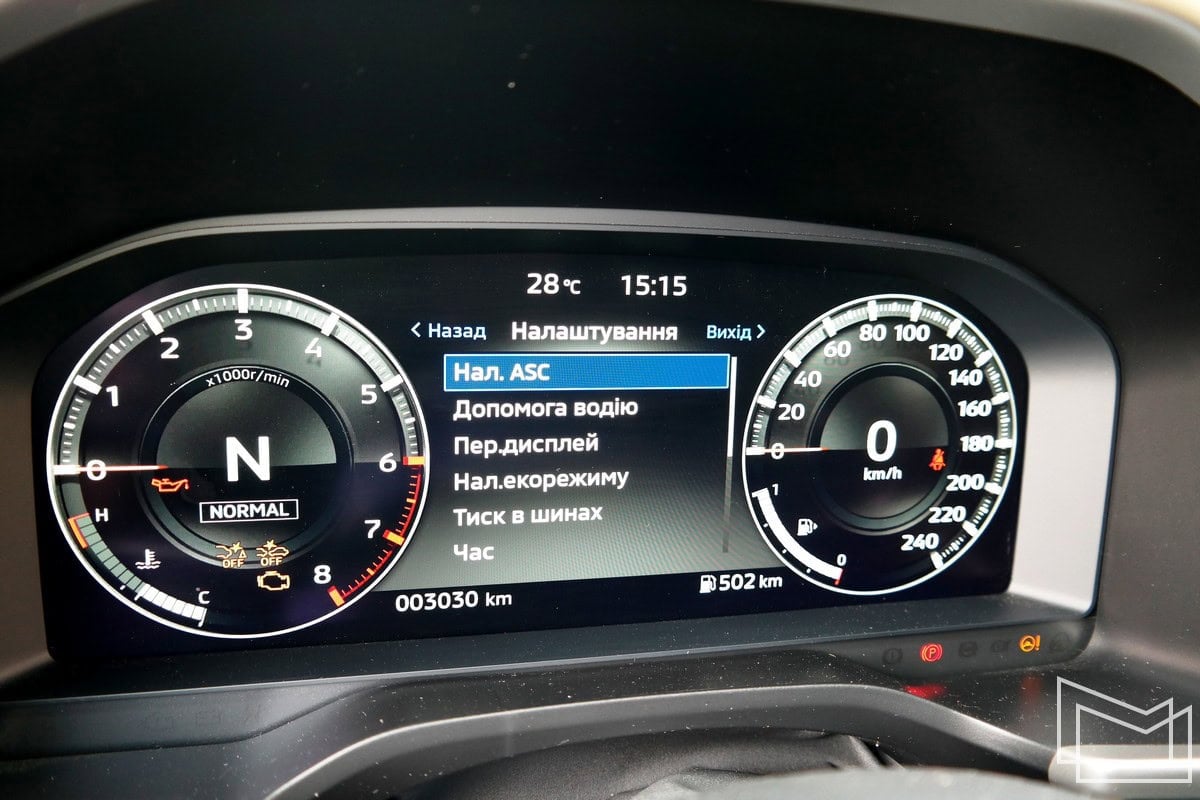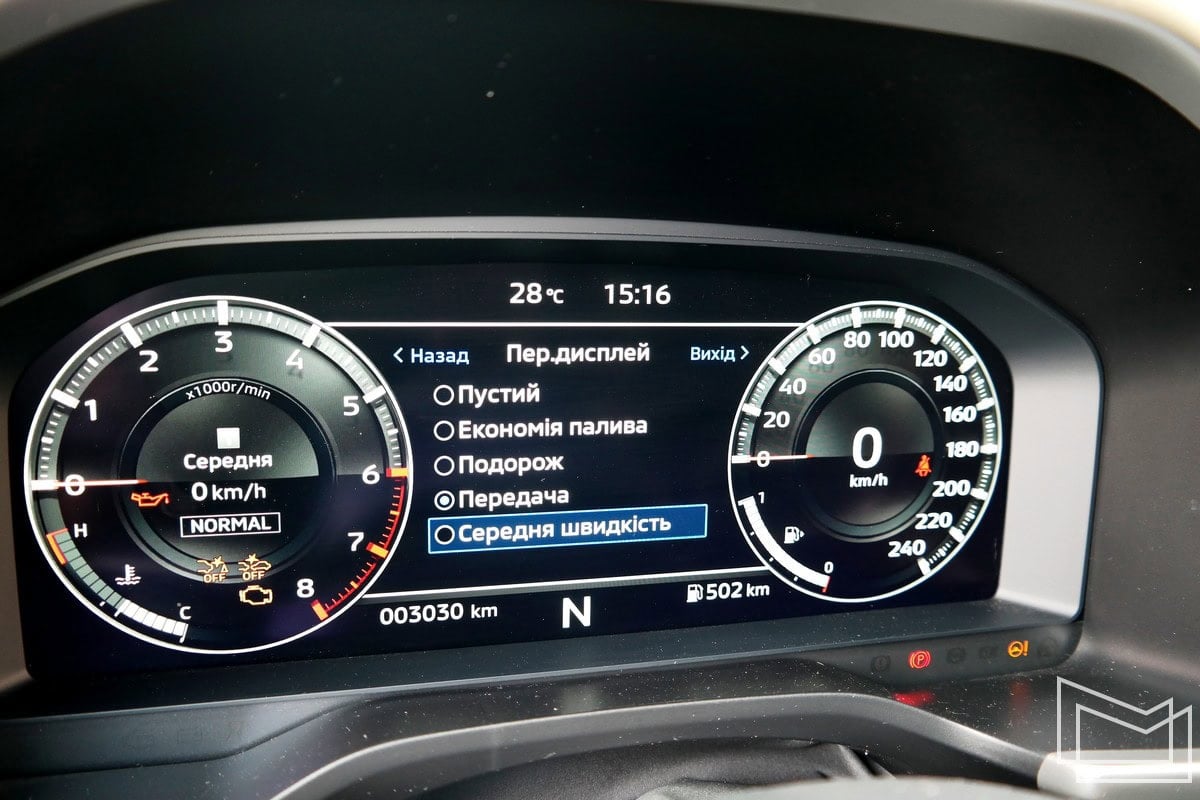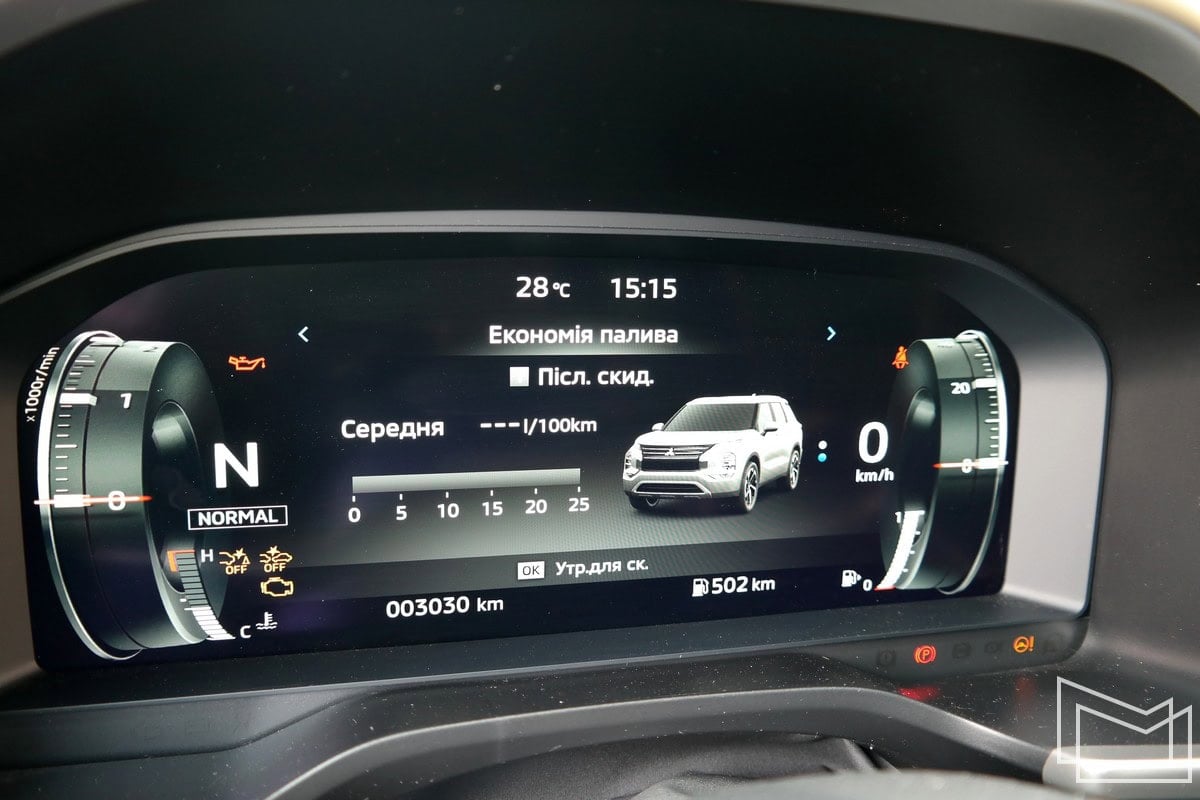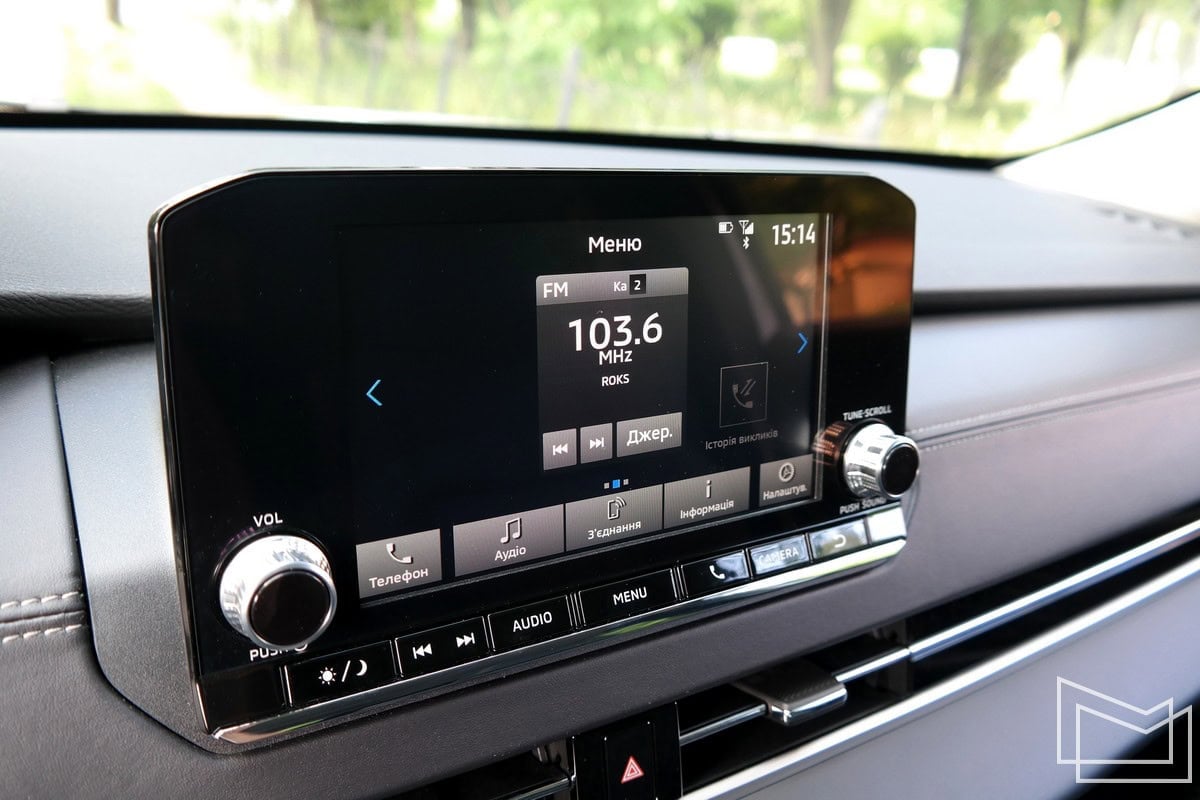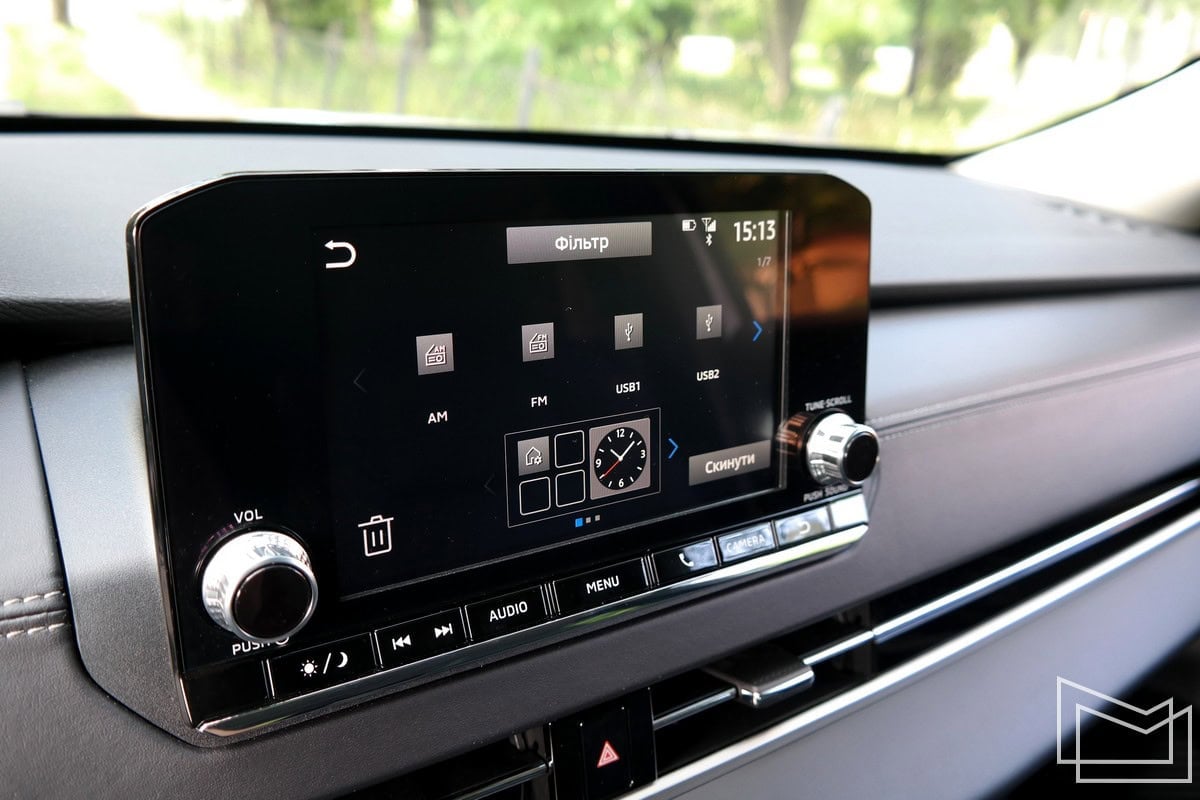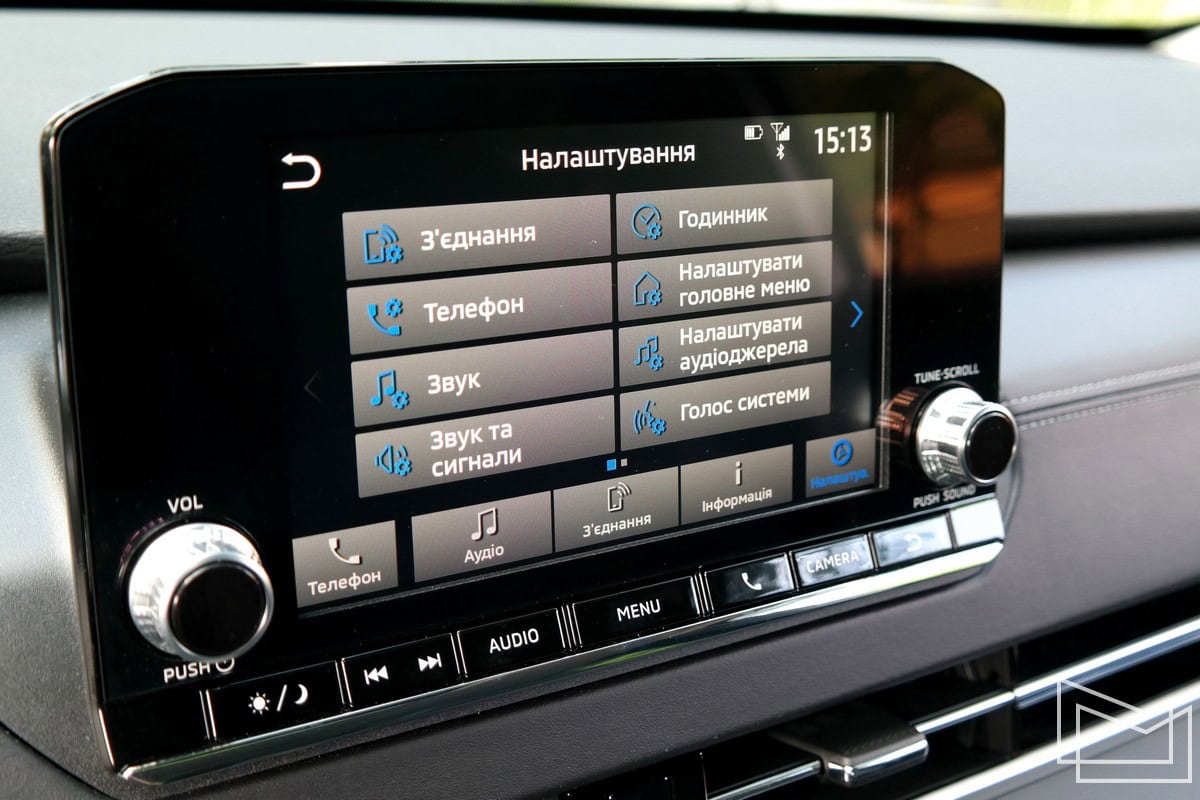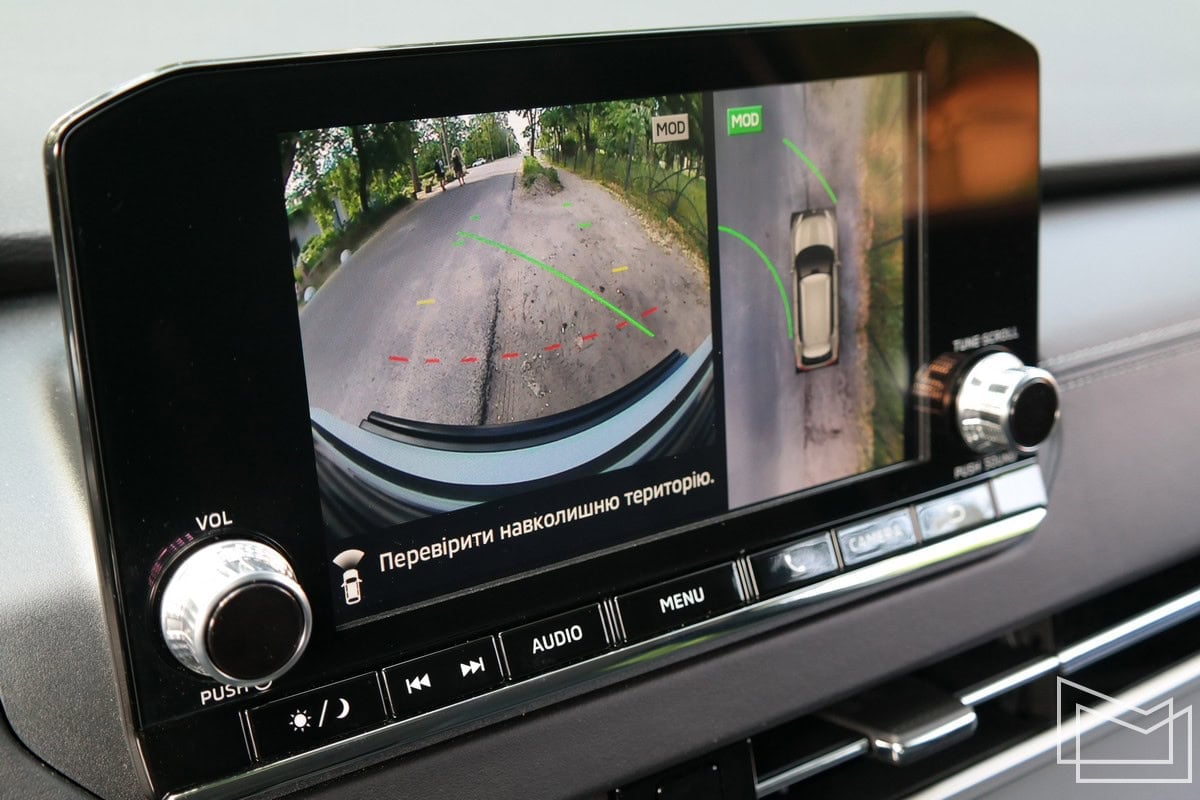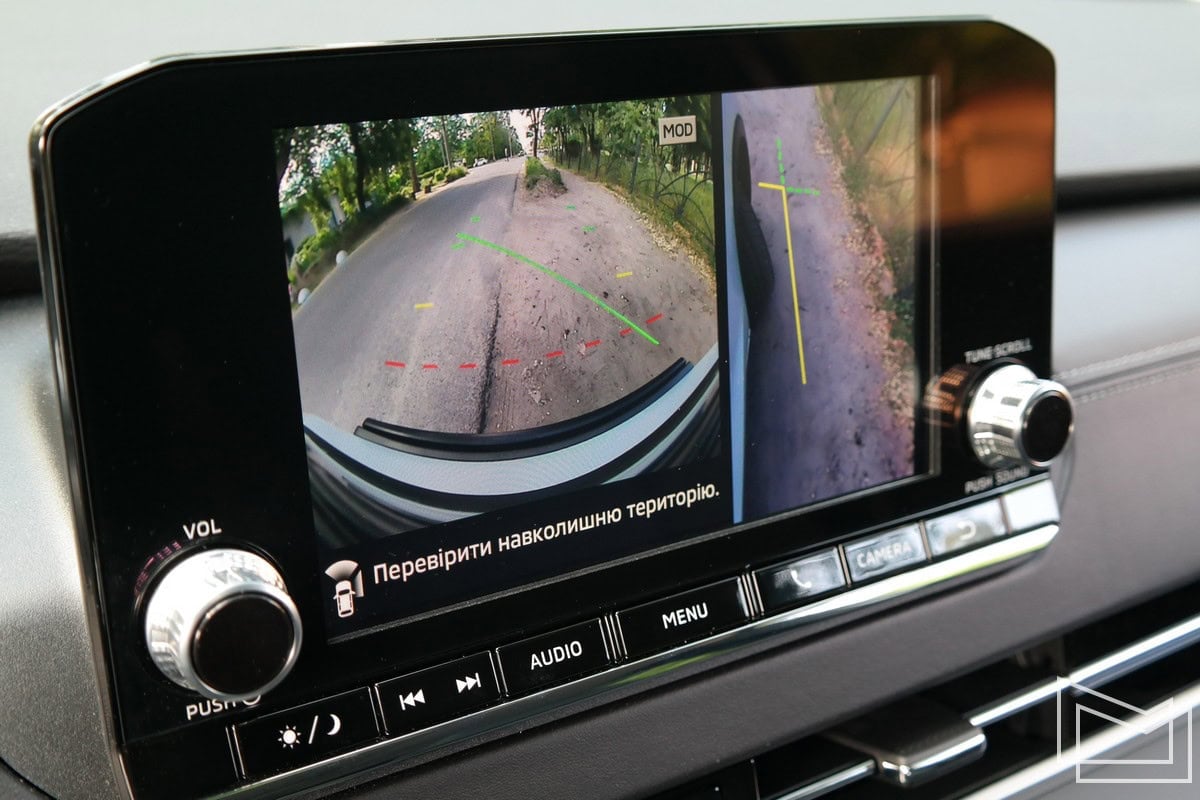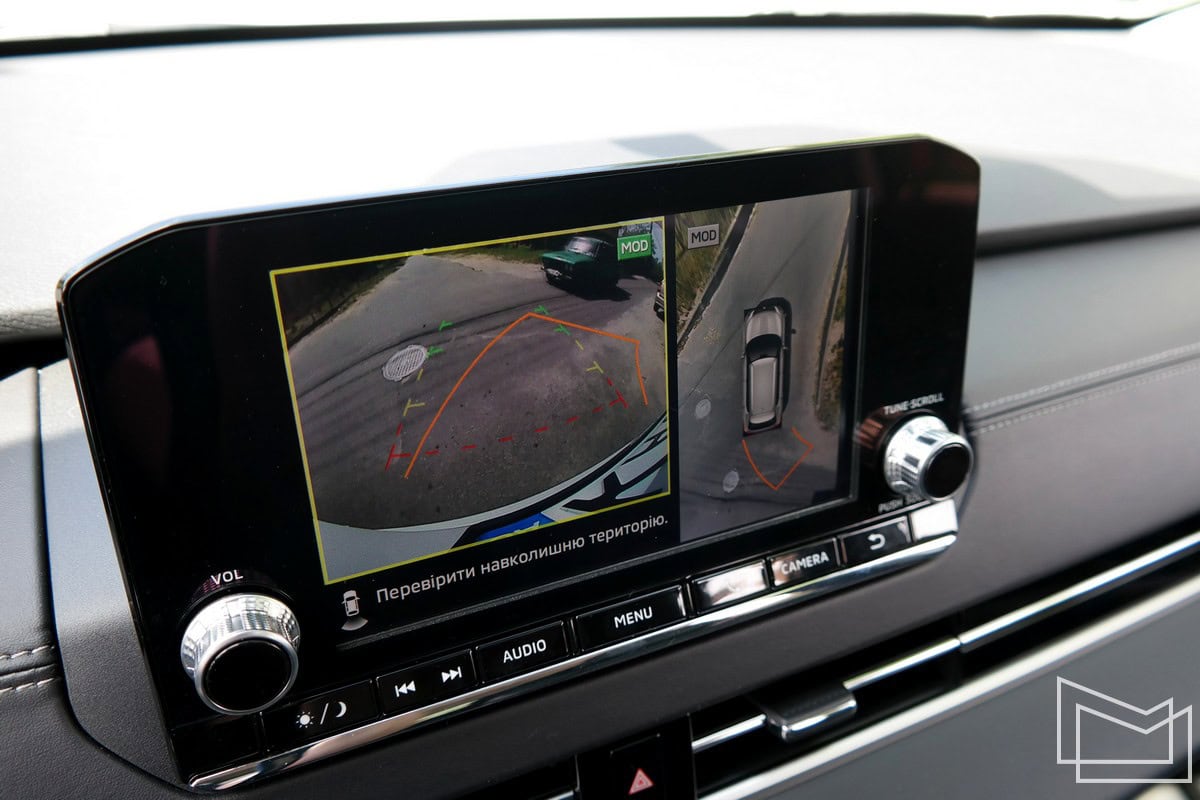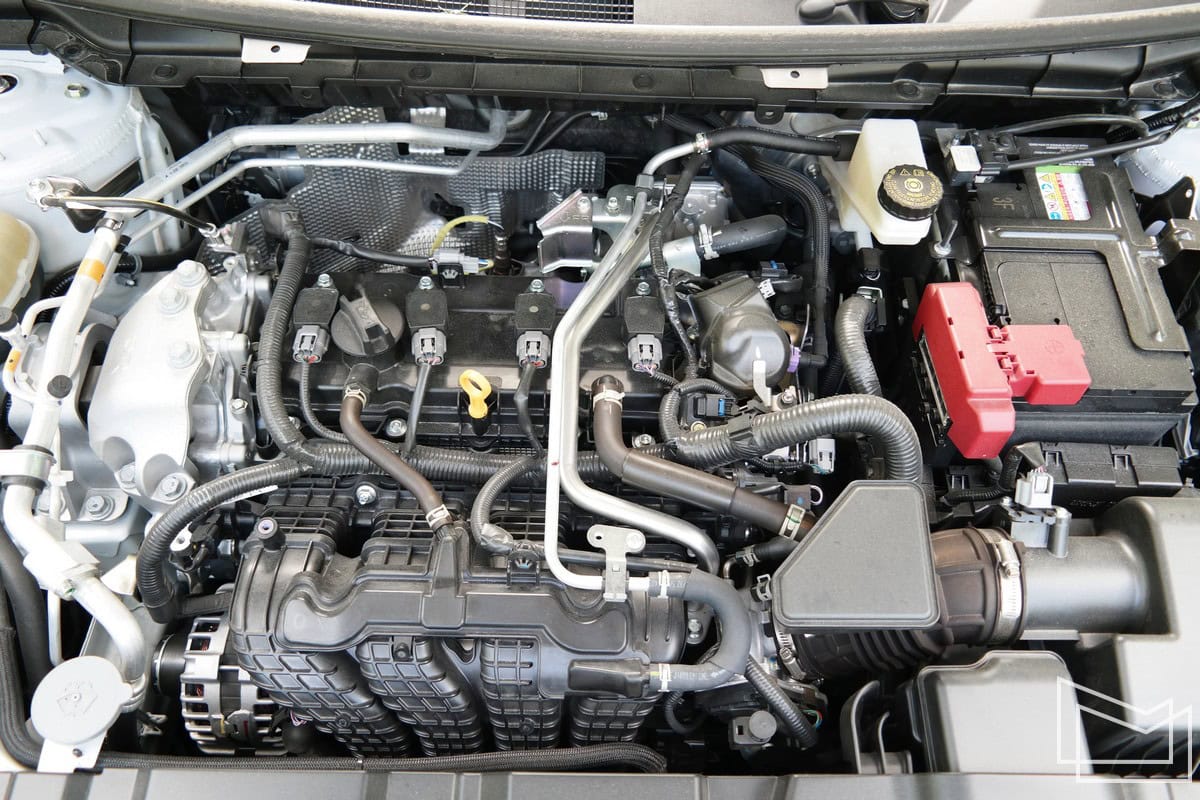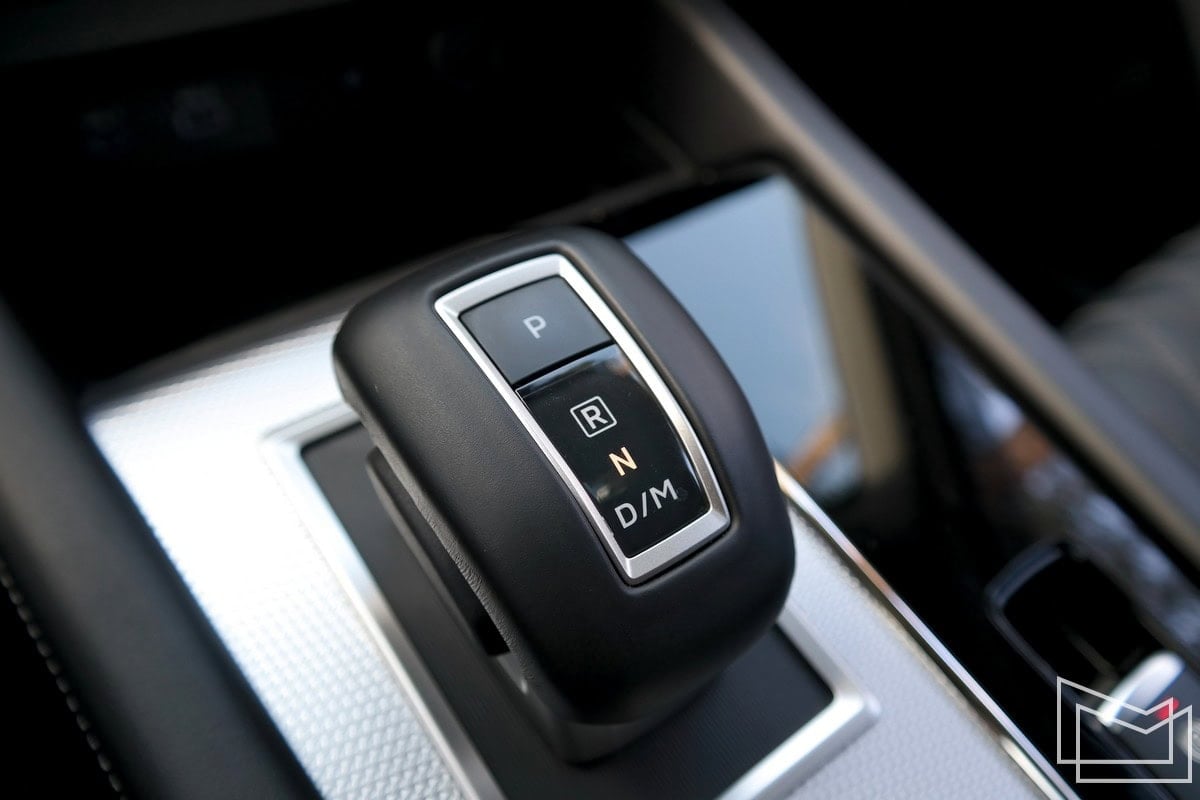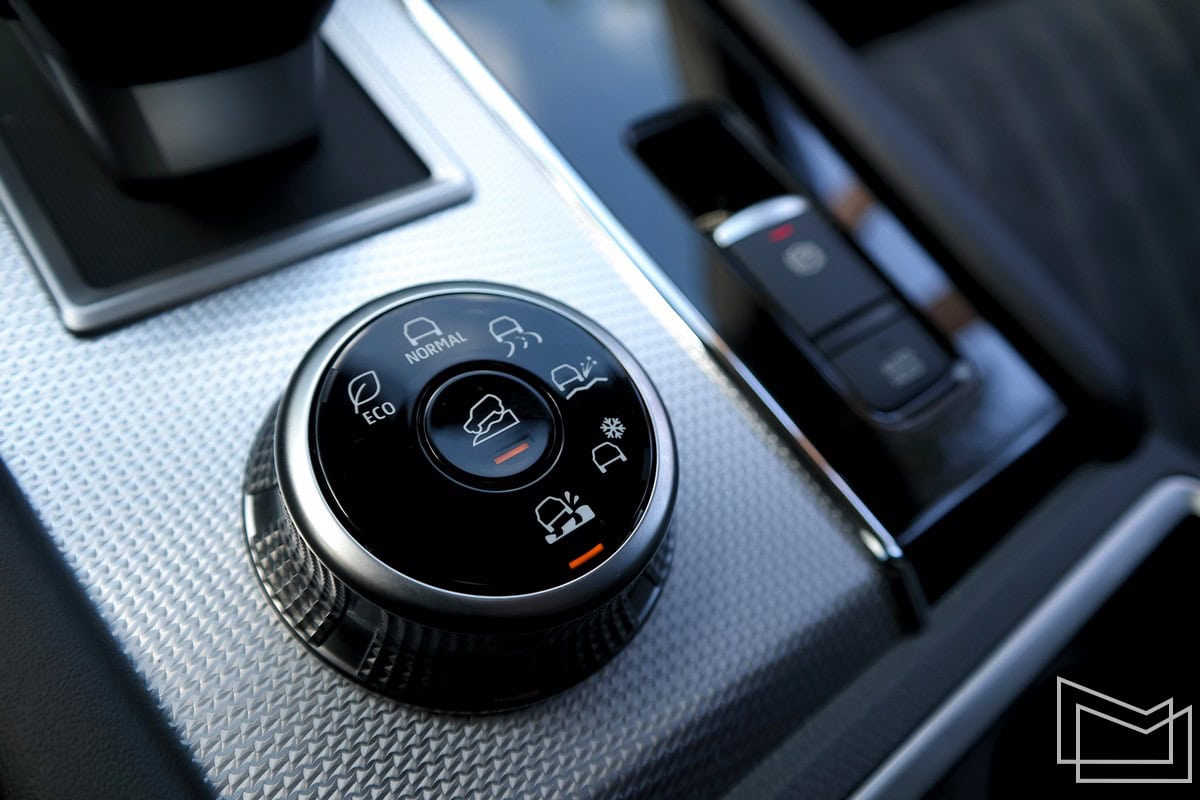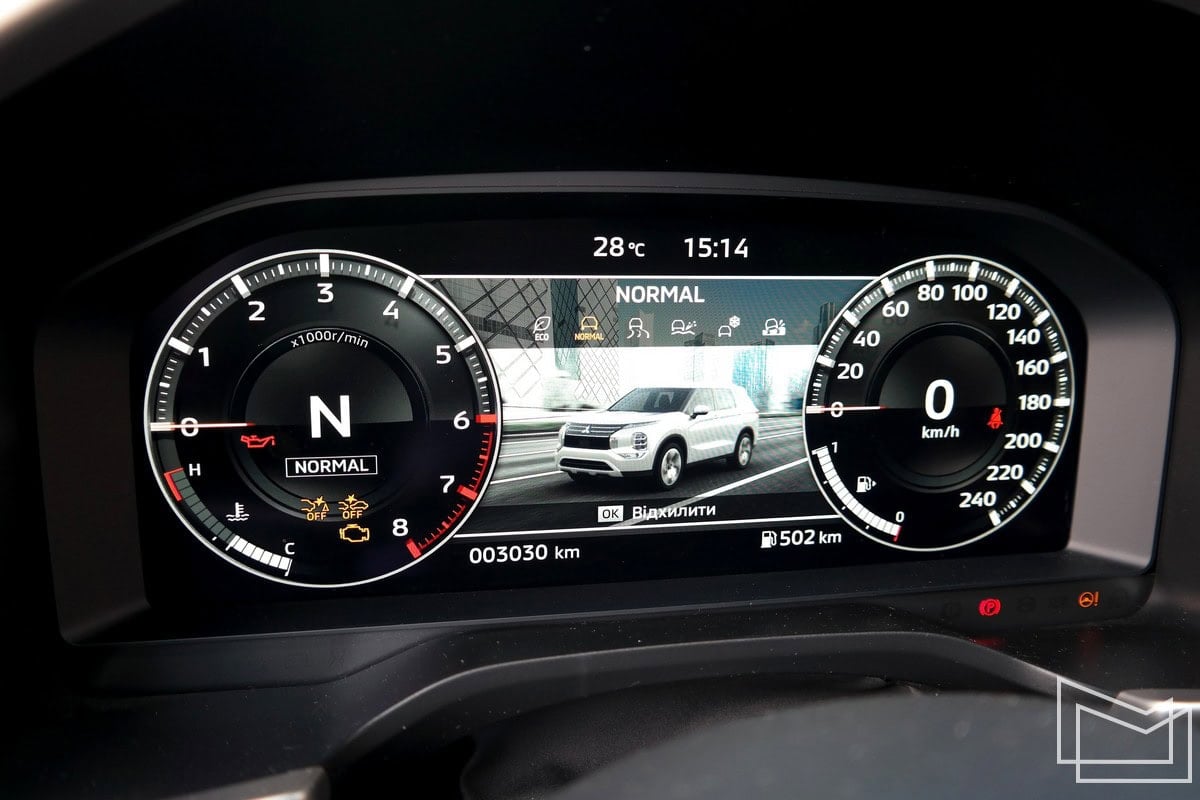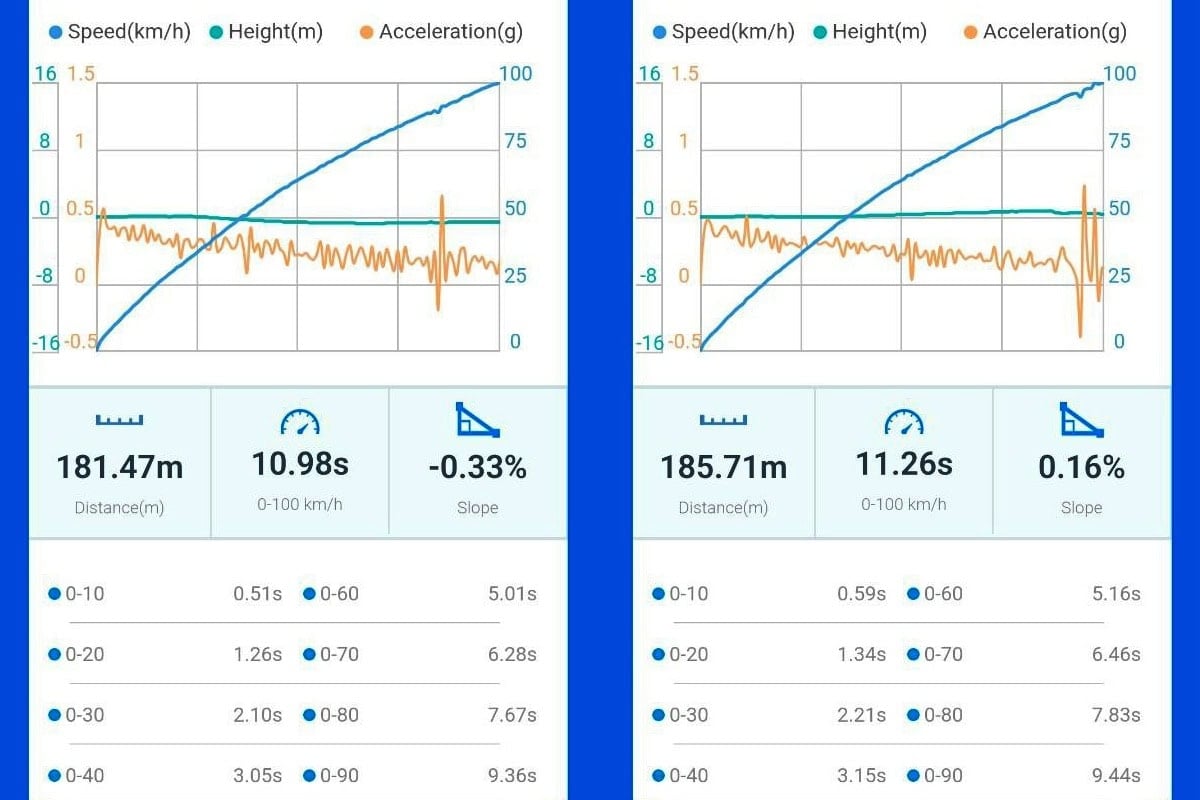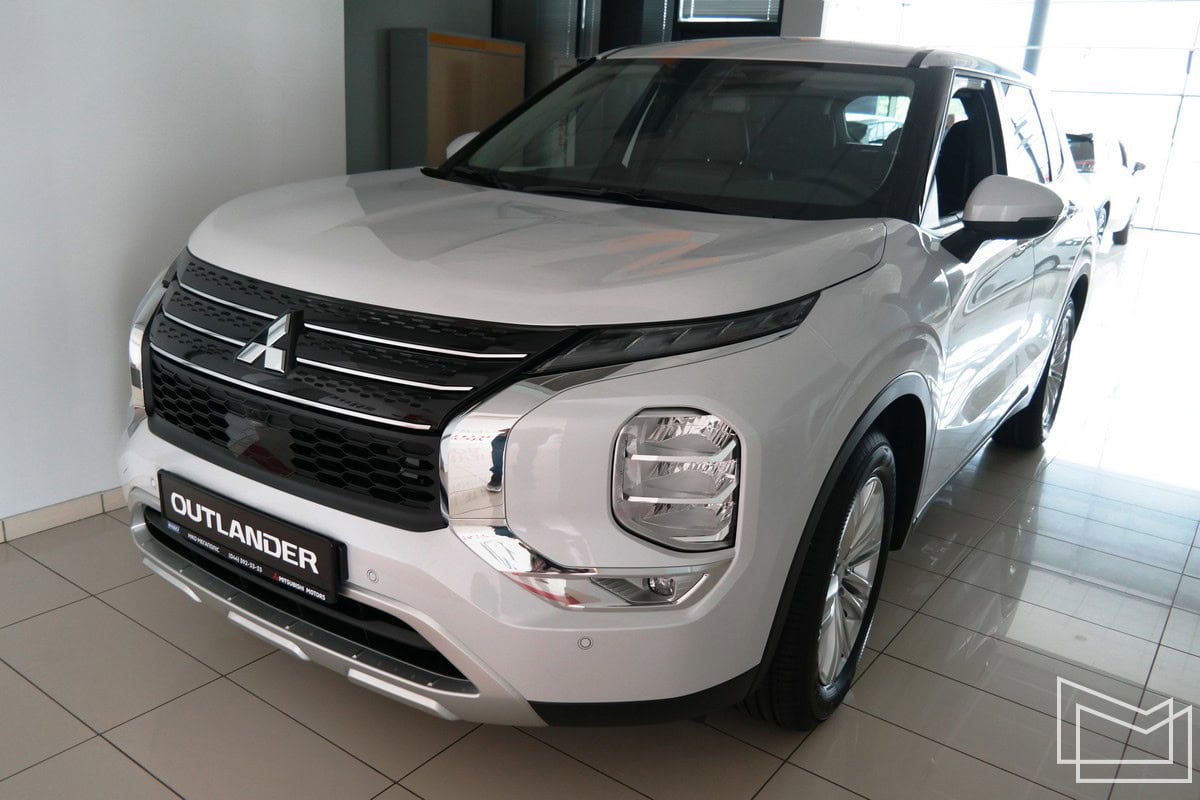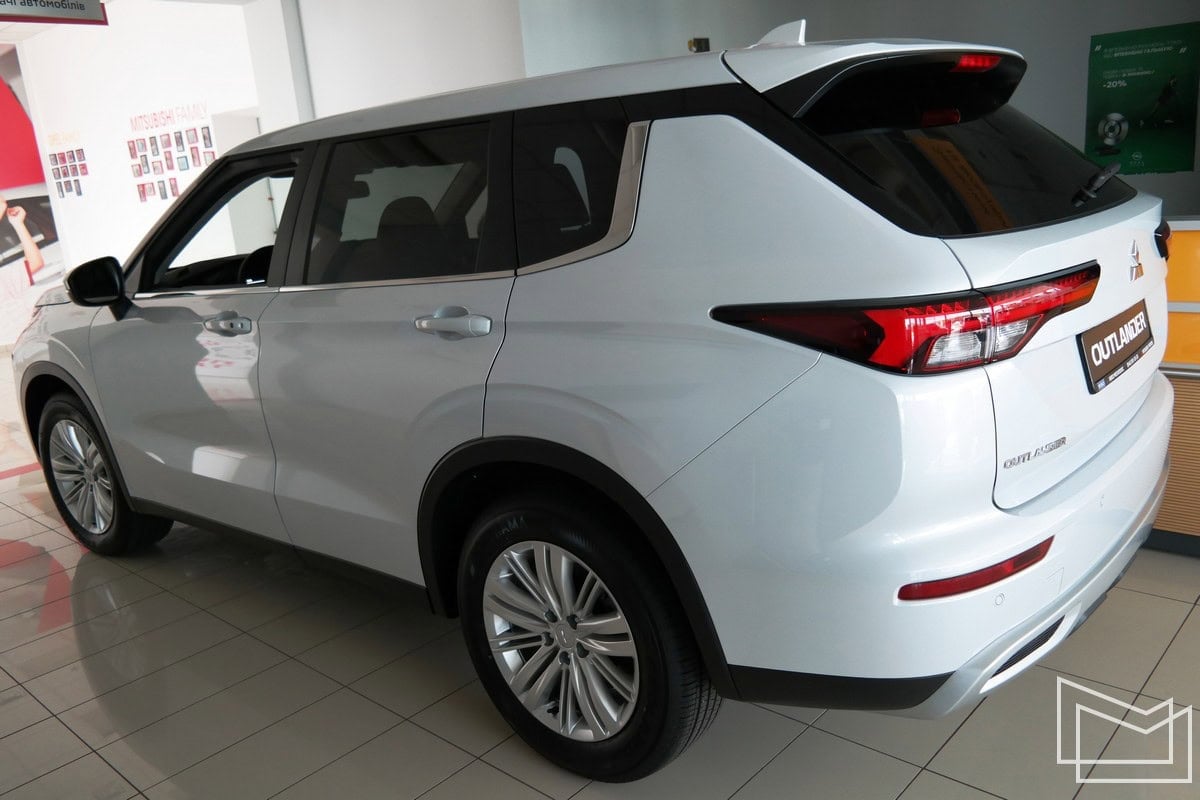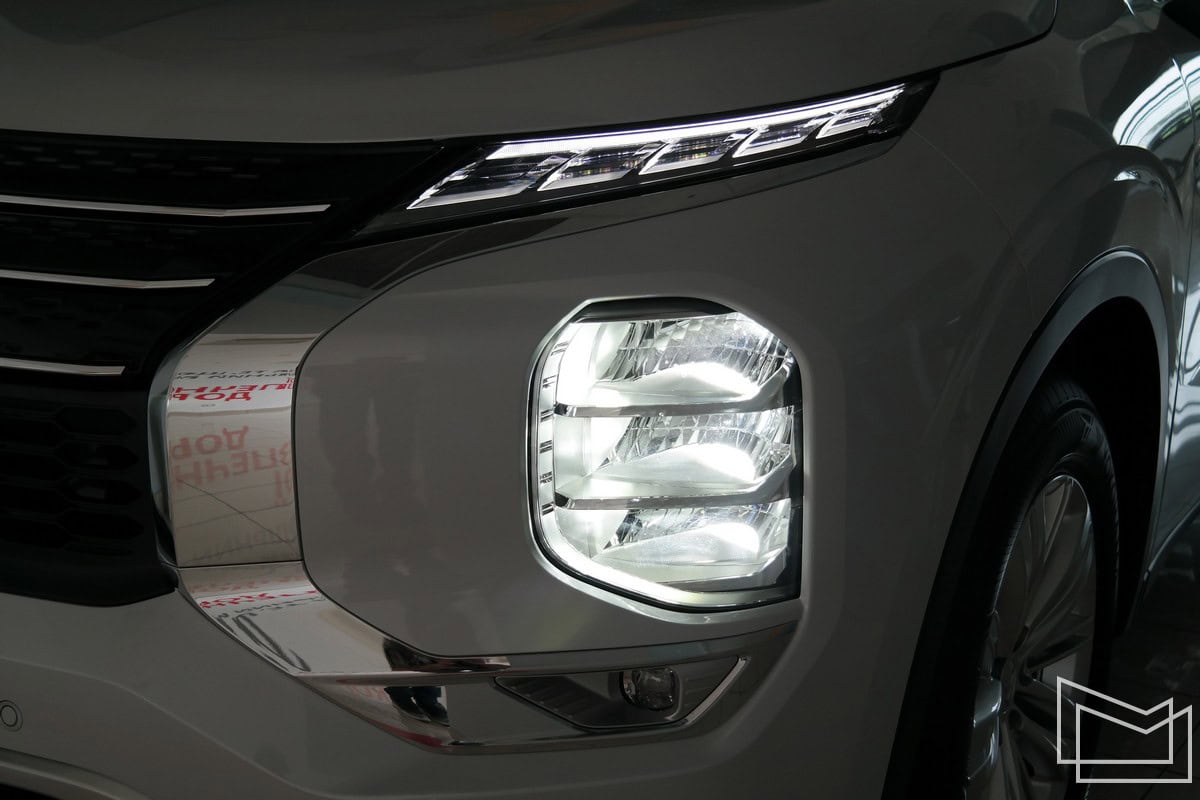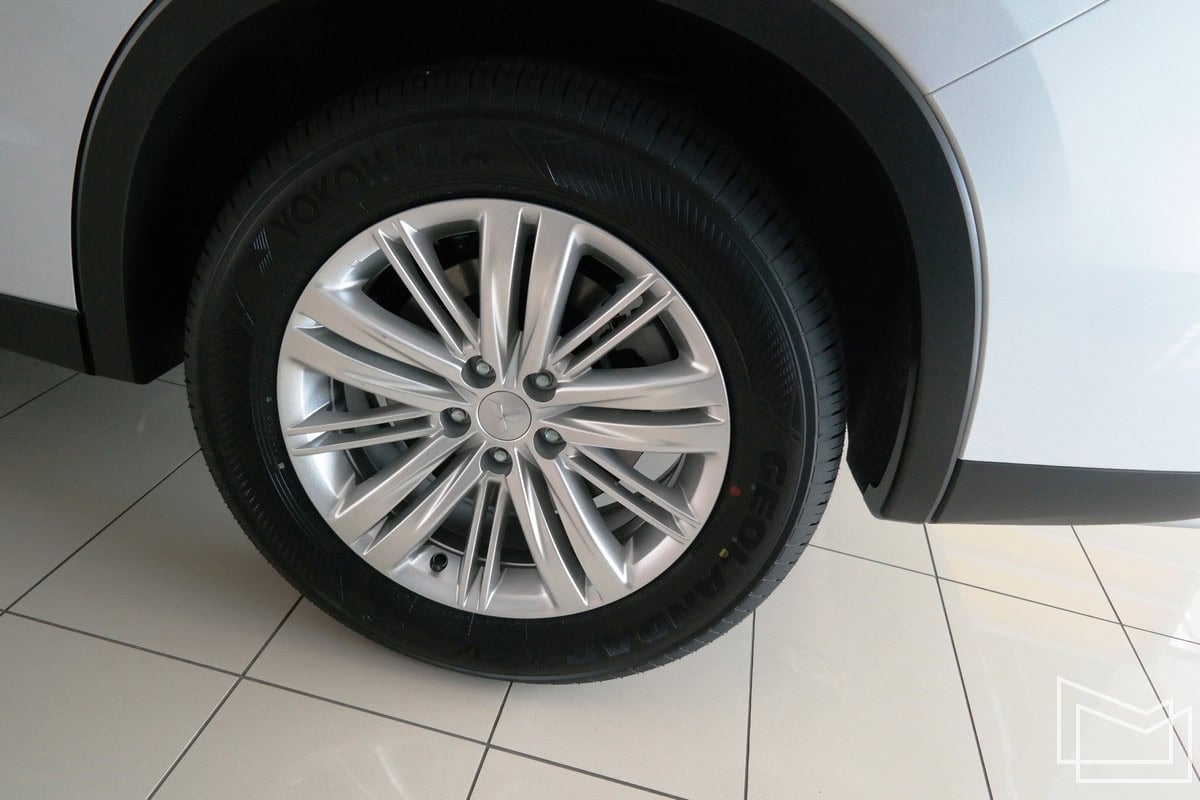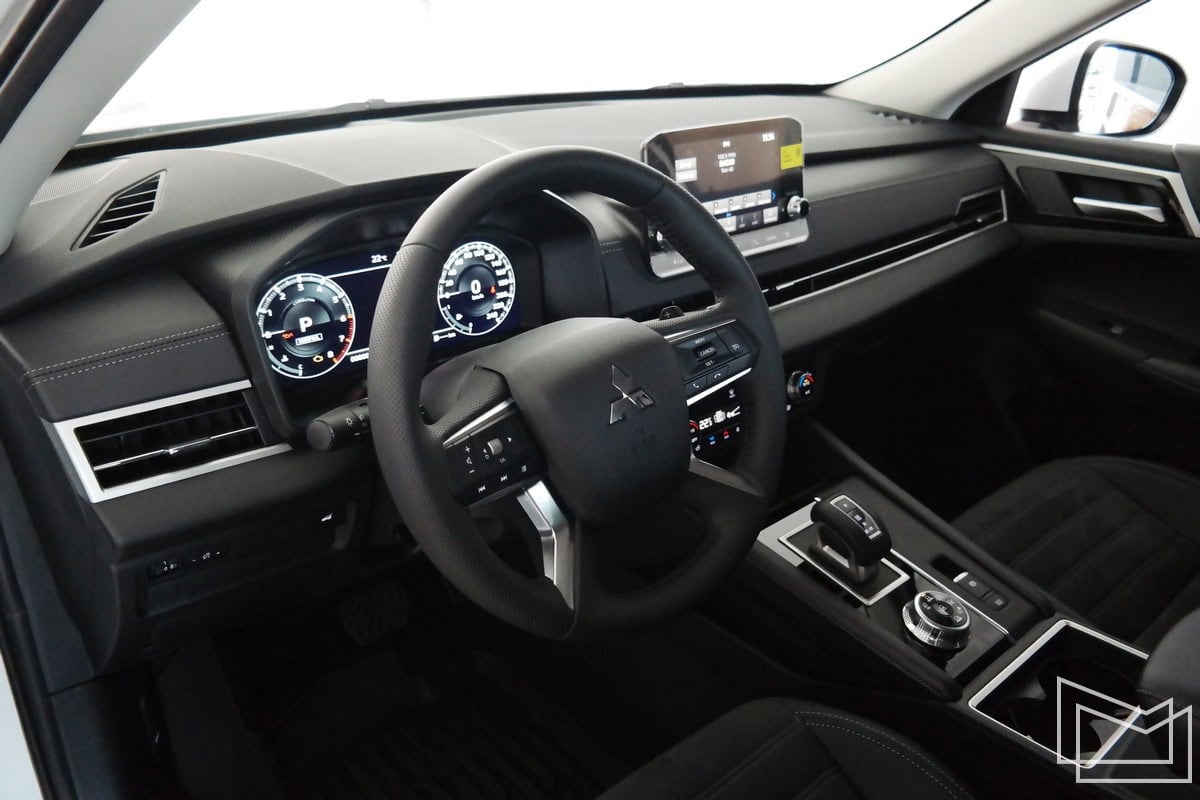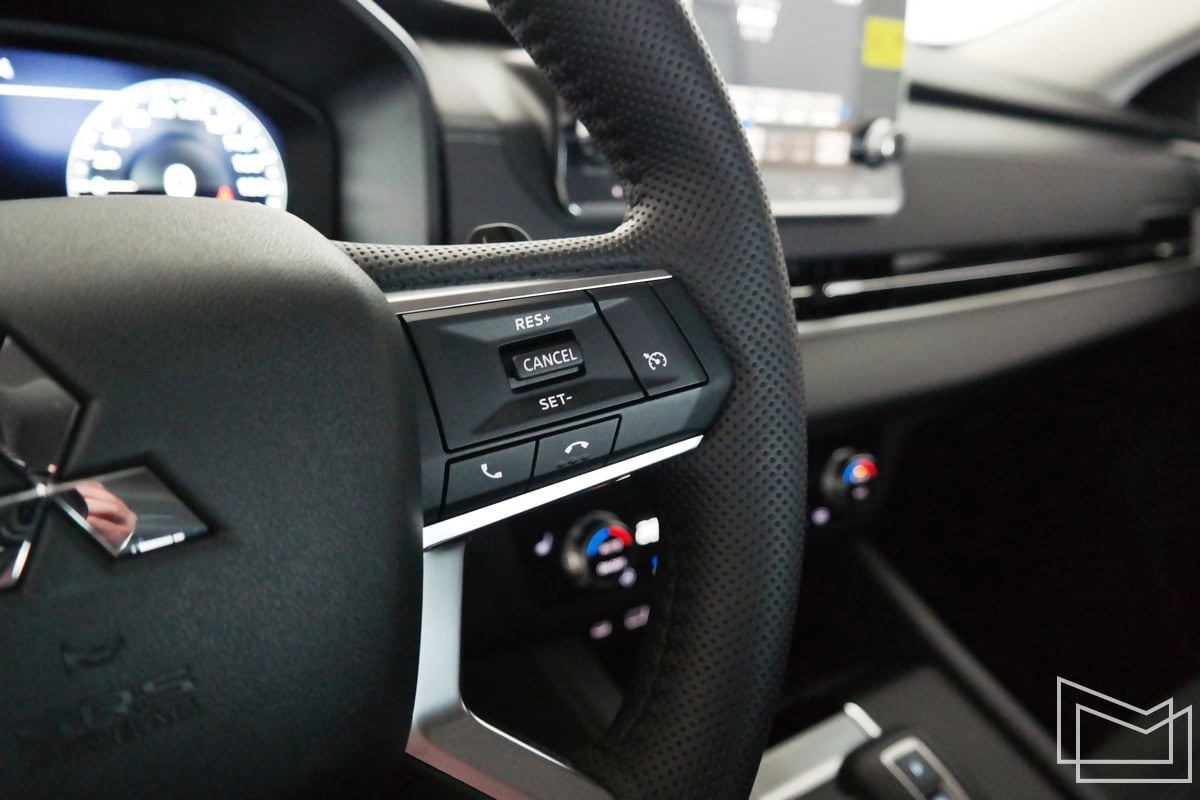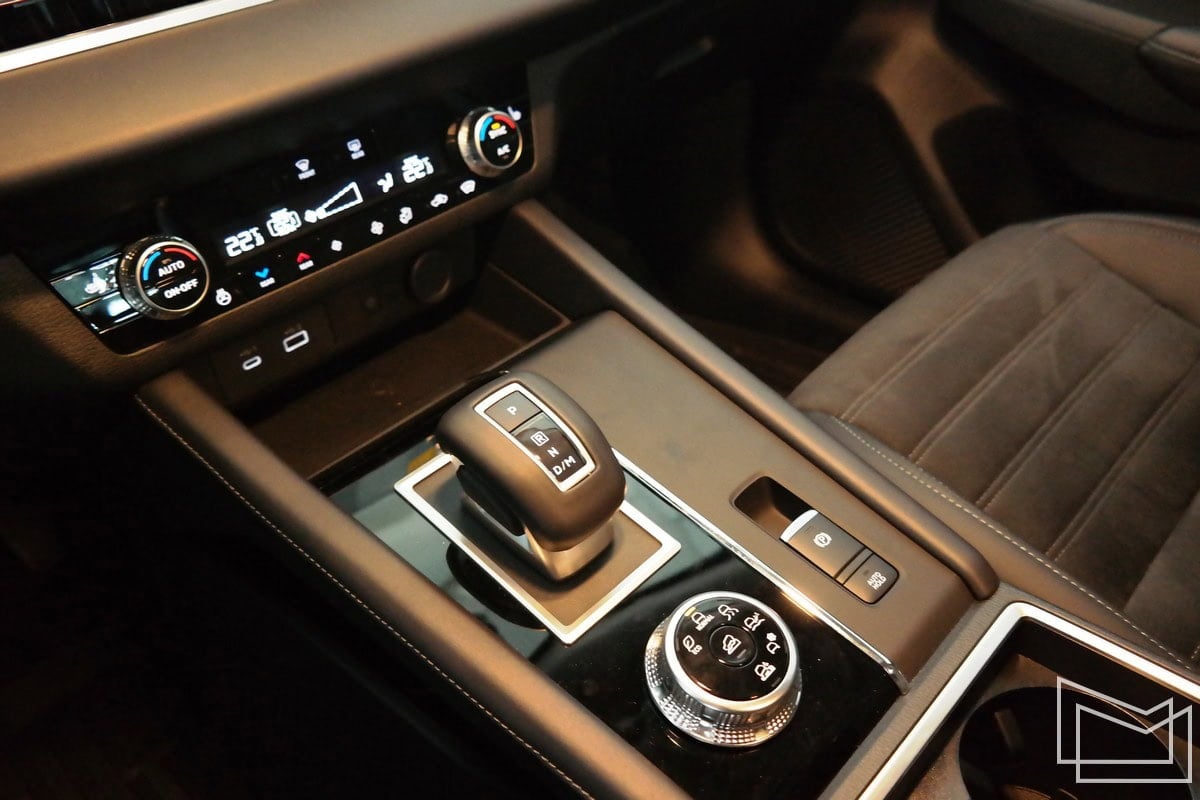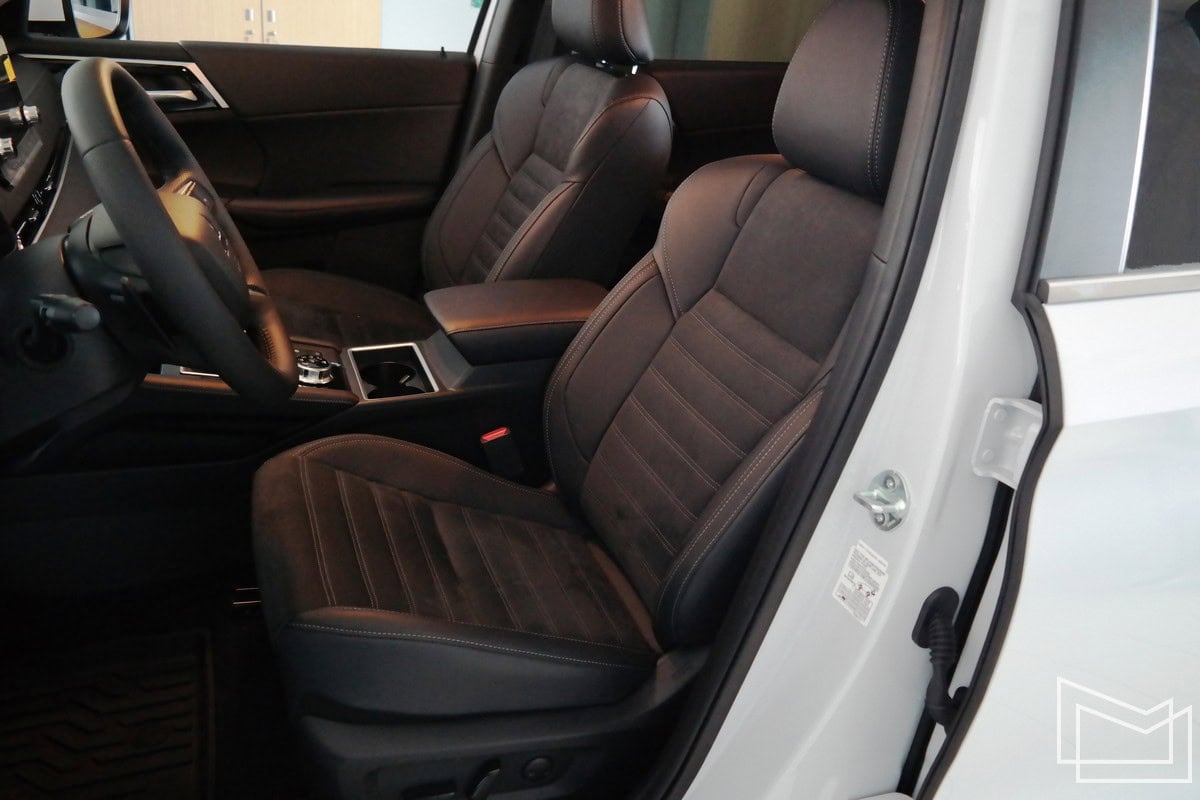A lot of time has passed since the first information about the new Mitsubishi Outlander in Ukraine was published but the car has not become less recognizable and interesting for potential buyers. After all, there are many owners of previous generations of Mitsubishi Outlander crossovers in Ukraine, and in this case, the question always arises: what does the new model offer, what are the improvements? Let me tell you about it.
Design: more size, more massiveness
With the change of generations, the Mitsubishi Outlander crossover has become larger in all key areas. A few centimeters, but it has grown everywhere - length, width, and body height. And it seems that the stylists tried to emphasize the increase in size with a massive convex design, which is especially noticeable in the front of the body: large block headlights, a grille with a wide chrome mustache...
The side surfaces and the rear partf are made in a more traditional style. And pay attention to the various techno-details that also seem to emphasize the radical update of the model. The same massive headlights now have an adaptive high beam unit, and the radiator grille now has a radar area for adaptive cruise control. A camera can be seen nearby, and there are also cameras in the side-view mirrors. Yes, yes, the surround view system was already there before; however, the new Mitsubishi Outlander has added a lot of new and modern equipment that has never or almost never been seen in its predecessor.
The fourth-generation Mitsubishi Outlander crossover (designated by the code DG or GM4W) has increased in size: length - 4.71 meters; width - 1.86 meters; height - 1.74 meters; wheelbase - 2.71 meters. The declared ground clearance is 205-210 mm (depending on the car version and wheel size). Don't like this massive convex design? Then remember the story of the third-generation Mitsubishi Outlander, which also initially had a rather dull appearance, but later received a completely redesigned front end design and instantly became attractive. Perhaps there will be design changes when the model is updated.
But the interior will not have to be changed. Traditional design in the horizontal lines of the front panel, the usual location of the climate control unit, a separately installed multimedia system, a classic steering wheel and a digital instrument panel behind it, a large niche and wireless charging. Everything is in its usual places, everything is instantly clear, everything (or almost everything) is controlled by physical buttons and switches - there are so many of them in the Mitsubishi Outlander cabin that it would be enough for two modern touchscreen cars! The front seats look and feel not even like seats, but like armchairs: massive and soft; but are they comfortable? The diamond-stitched leather trim looks attractive to older classic fans, but the seats soar in the summer heat - and there's no ventilation.
Although the climate control system itself is well developed: there are not only two separate climate zones for the driver/passenger, but also a third zone for the rear passengers. In general, the second row of seats deserves only positive marks: plenty of legroom and headroom, adjustable sofa (forward/backward and backrest angle), separate climate control and heating, large door opening angle and window blinds. This is one of the best family-friendly interiors among cars in this segment!
Moreover, the family can be quite large, because the new Mitsubishi Outlander offers a 7-seater cabin. However, the third row of seats frankly looks like a "+2" style: very little legroom (you need to move the second-row sofa), minimal headroom, poor air circulation and a feeling of suffocation - additional ventilation channels are urgently needed here. On the positive side, the seatback angle adjustment is very useful; however, it's all offset by the strange headrests that need to be taken out of the trunk niche and installed on the seats every time. Why didn't they just use integrated folding headrests? By the way, a few words about the trunk: it is large (311-2257 liters) and comfortable, there are various niches and hooks, and there is an electric lid drive with a sensor for contactless opening.
In general, everything is good about the cabin. The abundance of gloss in the trim and not very comfortable third-row seats prevent us from giving it an "excellent" rating. But the rest is only a plus: the reserve of space and the adjustment ranges of the first/second row seats, good visibility and the location of all elements in the expected places, many physical switches, a panoramic glass roof that gives a lot of light, a practical and thoughtful trunk.
Equipment: "atmosphere", variator, all-wheel drive
From the technical point of view, the fourth-generation Mitsubishi Outlander looks completely new and yet so familiar. The basis of the design is a load-bearing body, a modern CMF-C/D platform and fully independent wheel suspensions are used. Under the hood is an enlarged 2.5-liter PR25DD engine (instead of the 2.4-liter engine of its predecessor) with an increased compression ratio of 12:1 and direct fuel injection. Plus, an automatic transmission in the form of a CVT variator and S-AWC all-wheel drive with several modes of operation.
In addition, we can note the emergence of a large number of modern safety systems, a fully digital 12.3-inch instrument panel, a new multimedia system with an 8-inch touchscreen display, and the already mentioned adaptive high beam. But together with the CMF-C/D platform and the PR25DD engine, which is like a successor to the QR25 engine, everything also reminds us of the close technical relationship with the Nissan X-Trail - current (technology and displays) or previous (engine) generation.
Somewhere in the world, there is an extremely technologically advanced PHEVhybrid Mitsubishi Outlander - a real highlight of the model. However, in Ukraine, more traditional versions of the car are presented, equipped with an atmospheric gasoline 2.5-liter 4-cylinder engine. Plus, an automatic transmission, all-wheel drive, a new digital instrument panel and a multimedia system. But back to the engine: the power is declared at 184 hp at 6000 rpm, torque is 244 Nm at 3600 rpm, acceleration from 0-100 km/h is promised in 10.6 seconds and a top speed of 187 km/h, and fuel consumption should be at 10.5 liters per 100 km (city) or 6.8 liters per 100 km (highway). So...
Behind the wheel: slowly but surely
No wonder the Nissan X-Trail was mentioned above. After all, in the absentee comparison, the Mitsubishi Outlander crossover also does not have any exciting and dynamic drive, but it has improved suspension comfort. The designers seem to have deliberately loosened the springs and shock absorbers, making the Mitsubishi Outlander crossover quite soft on the move. Even with 20-inch wheels, it absorbs small and medium-sized pits well, allowing only large ones to be pushed, and also gently sways on a series of bumps that you drive over. I think the chunky 18s will give you an even greater sense of indifference to bad roads.
The downside of this suspension setup, however, is all sorts of body sway and vibrations. Because they occur not only on a series of bumps, but also in corners (as rolls), during braking and acceleration (as nodding), the tall body on a soft suspension is sensitive to the side wind when driving fast on the highway. So, the Mitsubishi Outlander crossover is not about dynamic drive, but about softness and leisurely driving. The large steering wheel hints at something else: minimal effort, almost no feedback, medium sharpness (about 2.5 turns from stop to stop). The new Mitsubishi Outlander is not conducive to precise driving - the steering wheel does not set the trajectory, but only the general course. However, this is acceptable with this suspension: the springs will work out the next potholes and you can fly on.
But the engine and the automatic transmission hint at softness and leisurelyness the most. They give a good start from a standstill (up to a speed of 30-40 km/h), and then acceleration occurs in the range of 2.5-3-3.5 thousand revolutions due to the stretched-rubber change in the gear ratio of the variator. And this acceleration seems monotonously smooth and not very lively. However, this flatness successfully hides the increase in speed: you look at the speedometer - and there is already well over a hundred; although it feels like we were just accelerating a little bit smoothly and calmly. Only when you need maximum dynamics, when the accelerator pedal is pressed all the way down, the engine gains 5-5.5-6 thousand revs, and the variator tries to imitate gear shifting - you can already hear the change in the tone of the engine sound, it turns out more emotional. But is it faster and more dynamic?
The Mitsubishi Outlander crossover is the case when the thought "I will get there!" is more important than the question "when will I get there?": the atmospheric engine and variator are in no hurry, but make accelerations as smooth as possible. The driving mode selection system allows you to choose several general modes (ECO, NORMAL, TARMAC) or set up all-wheel drive for slippery surfaces (SNOW, MUD, GRAVEL); in any case, it is a combination of smooth or sharper engine response and more active all-wheel drive due to the clamping of the friction clutch. However, we can't talk about dynamics anyway - acceleration from 0-100 km/h takes about 11 seconds. It should be noted that the measurements were taken in rather hot weather; in cooler air, the car may show better dynamics.
Finally, a few more of my own observations - now about fuel consumption. On average, I got 10-11 liters per 100 kilometers in the city. With empty roads and a smooth driving style, you can get less than 10 liters of fuel consumption; with constant traffic jams and/or a dynamic driving style, you get 12+ liters. Fuel consumption on the highway at a speed of about 100 km/h remains at 6.5 liters.
Cost: how much does Mitsubishi Outlander cost and who are the competitors
I will allow myself to almost completely copy the description of the new Mitsubishi Outlander's equipment from the previous material, because the essence of the issue has not changed: the car is offered in Ukraine in only two configurations, which are identical in terms of engine/transmission, but differ in terms of equipment. But the clarification "almost completely" does not refer to the list of versions, but to the price of the car - since the first information appeared, the Mitsubishi Outlander crossover has become more affordable, which is nice! So...
The model range is opened by the crossover Mitsubishi Outlander INTENSE with a price of 1.6 million UAH or $40 thousand and it immediately offers the following: 7-seat 3-row interior, front and side airbags, side curtain airbags, ABS and ASC systems, heated front seats and heated steering wheel, power trunk lid with touch opening, Mitsubishi SDA multimedia system with 8-inch touchscreen display, support for Apple CarPlay and Android Auto technologies, a rearview camera, power seat adjustments, combined fabric and artificial leather seat trim, cruise control, three-zone climate control, LED headlights, 18-inch alloy wheels, etc.
One level higher is the crossover Mitsubishi Outlander ULTIMATE with a price of 1.785 million UAH or $44.5 thousand., where the following is added: lane departure control, rear-view mirror blind spot monitoring, front collision avoidance system, rear cross-traffic alert, BOSE audio system (by the way, it sounds unexpectedly good), surround view cameras, adaptive cruise control, heated second-row seats, rear window curtains, panoramic glass roof, black and silver 20-inch wheels, leather and aluminum interior trim, adaptive high beams, etc.
The Mitsubishi Outlander car is currently available in Ukraine in two configurations: it is clear that the test version is the maximum; but here is an additional example - the starting version. The differences are noticeable only in the details: conventional LED headlights, smaller silver 18-inch wheels, traditional cruise control, no panoramic roof, etc. But in other respects, the equipment is the envy of competitors: an unchanged 2.5-liter engine, automatic variator and all-wheel drive, advanced 3-zone climate control, combined seat trim and 7-seater interior, digital instrument panel, multimedia system with an 8-inch display.
Speaking of competitors. The first rival is the Nissan X-Trail: a similar platform and a similar interior, but also far from outstanding driving performance and suspension. But there's also a very wide range of versions - about 20 variants of the car versus only two. However, in general, the logic of the differences between cars is not even in the number of versions, but in the type of buyers: if you like hybrids based on small turbo engines and massage seats and large displays, go for Nissan; if you like "atmospheric", the usual all-wheel drive, and a 7-seater interior, go for Mitsubishi. And that's it.
By the way, if you absolutely need a 7-seater interior in the format of a mid-size crossover, then you can still call Hyundai Santa Fe and Skoda Kodiaq rivals. However, if you don't need a 7-seater, but a 5-seater is enough, then there are many other competitors: Mazda CX-5, Honda CR-V, Toyota RAV4, Hyundai Tucson. Moreover, they all offer a wider range of versions; Honda, Hyundai, and Toyota offer good fuel-efficient hybrids; the Mazda CX-5 crossover offers a cool driving character. And it is these competitors that require further reduction in the price of the Mitsubishi Outlander: it can be due to the appearance of a 5-seater interior, a version with a mono-drive, and simplification of equipment. And so...


